Foods That Quiet Chronic Inflammation
Chronic inflammation is a growing health concern, with recent data revealing that approximately 60% of Americans suffer from conditions linked to persistent inflammation. This silent process can damage vital organs and systems, including the heart, brain, joints, and digestive tract. One significant challenge is that chronic inflammation often develops unnoticed, making early detection difficult and allowing damage to accumulate over time. Understanding how diet can influence inflammation is essential for prevention and management, as the right foods may help reduce the risk of chronic disease and improve overall well-being.
1. Blueberries
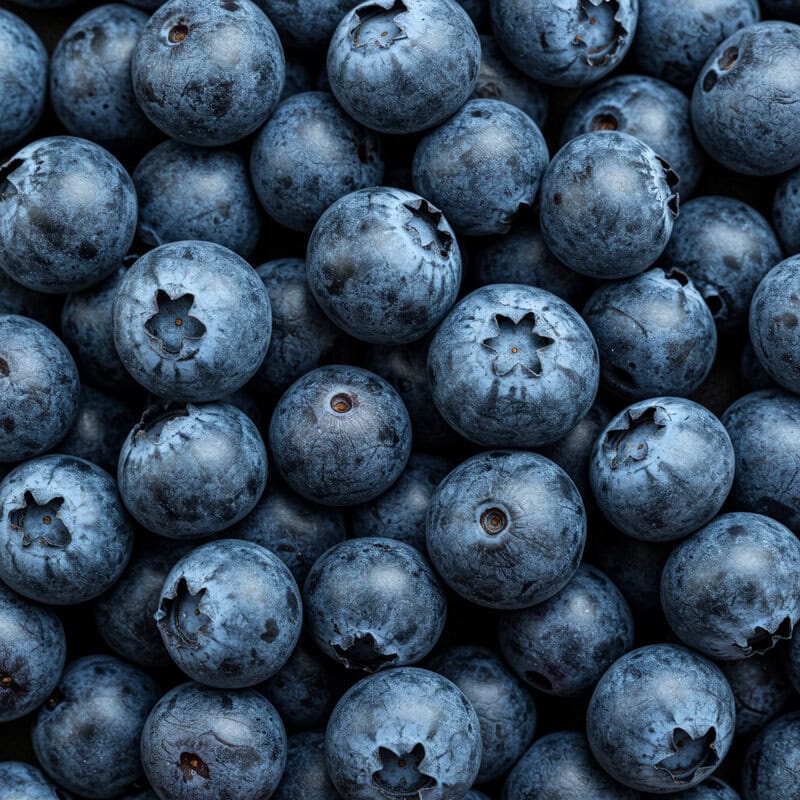
Blueberries are renowned for their potent anti-inflammatory properties, largely due to their high concentration of antioxidants called anthocyanins. These compounds help inhibit inflammatory pathways in the body by neutralizing free radicals and reducing the activity of pro-inflammatory cytokines. Studies have shown that regular consumption of blueberries can lower markers of inflammation, such as C-reactive protein, and may even protect against chronic conditions like heart disease and cognitive decline.
When compared to other berries, such as strawberries and raspberries, blueberries tend to have a higher total antioxidant capacity. This makes them particularly effective at combating oxidative stress, which is a key driver of chronic inflammation. While all berries are beneficial, the unique phytochemical profile of blueberries provides additional support for inflammation control.
Adding blueberries to your diet is simple and delicious. Enjoy them fresh as a snack, blend them into smoothies, sprinkle them over oatmeal or yogurt, or add them to salads for a burst of color and flavor. You can also use frozen blueberries, which retain most of their nutrients, making them a convenient option year-round. For more information, visit the Harvard T.H. Chan School of Public Health.
2. Salmon
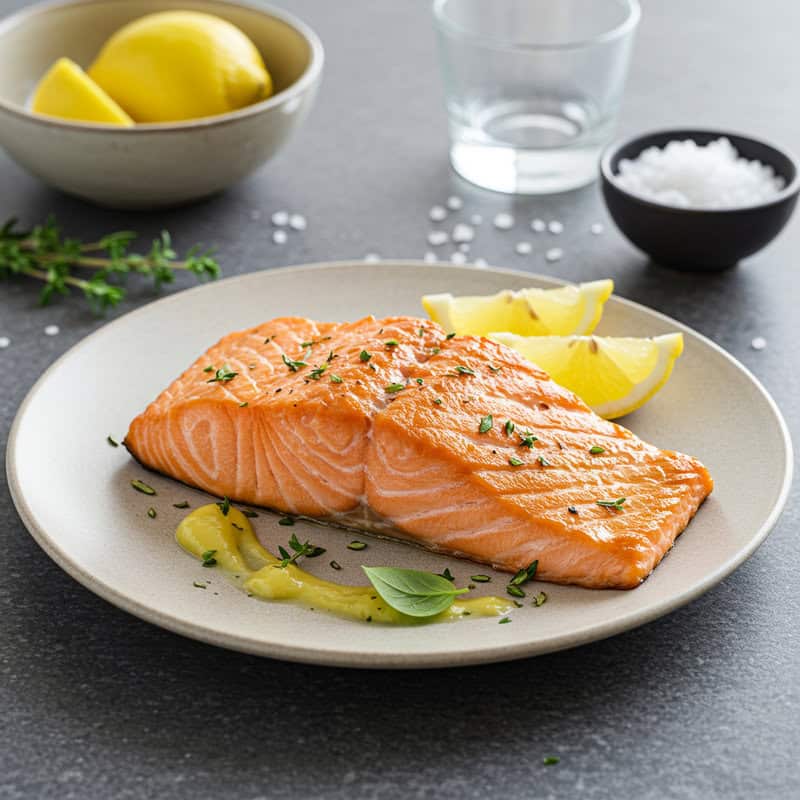
Salmon is a rich source of omega-3 fatty acids, particularly eicosapentaenoic acid (EPA) and docosahexaenoic acid (DHA), which are well-known for their powerful anti-inflammatory effects. These omega-3s help decrease the production of inflammatory molecules, such as prostaglandins and cytokines, and support the body’s natural immune response. Research indicates that regular consumption of salmon and other fatty fish can reduce symptoms of inflammatory diseases, including rheumatoid arthritis and cardiovascular issues (source).
While plant-based omega-3s, such as alpha-linolenic acid (ALA) found in flaxseeds and walnuts, also offer health benefits, they are not as efficiently converted by the body into EPA and DHA. Thus, the anti-inflammatory effects from plant sources tend to be less pronounced compared to those from fatty fish like salmon (Harvard).
For safe consumption, choose wild-caught salmon when possible to minimize exposure to contaminants like mercury and PCBs. Aim for two servings per week, baked, grilled, or broiled, and avoid deep-frying to preserve omega-3 benefits. Always check local advisories for the safest sourcing options in your area.
3. Extra Virgin Olive Oil
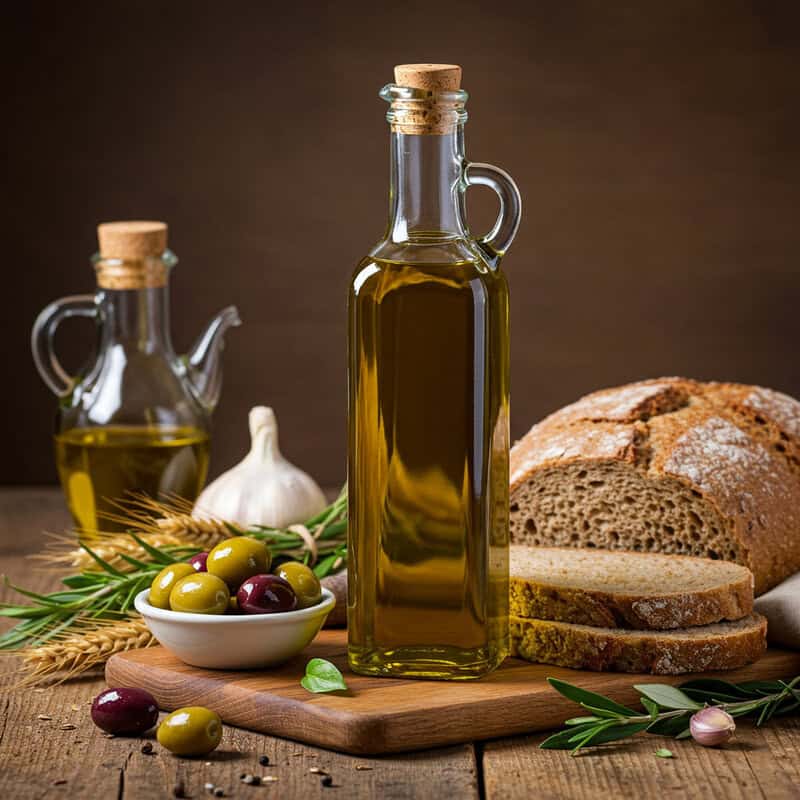
Extra virgin olive oil is celebrated for its anti-inflammatory properties, mainly due to a compound called oleocanthal. Oleocanthal acts similarly to non-steroidal anti-inflammatory drugs (NSAIDs) by inhibiting enzymes responsible for inflammation in the body, such as COX-1 and COX-2. Regular consumption of extra virgin olive oil has been linked to reduced levels of inflammatory markers, and it is a cornerstone of the Mediterranean diet, which is associated with a lower risk of chronic diseases like heart disease and arthritis.
When compared to other oils, such as sunflower, soybean, or corn oil, extra virgin olive oil stands out for its high content of monounsaturated fats and bioactive compounds. Many common cooking oils are high in omega-6 fatty acids, which can promote inflammation when consumed in excess. Olive oil, on the other hand, tilts the balance toward anti-inflammatory benefits (Harvard T.H. Chan School of Public Health).
For optimal benefits, use extra virgin olive oil as a dressing for salads, drizzled over vegetables, or as a finishing touch to cooked dishes. Avoid using it for high-heat frying to preserve its delicate compounds and flavor.
4. Broccoli
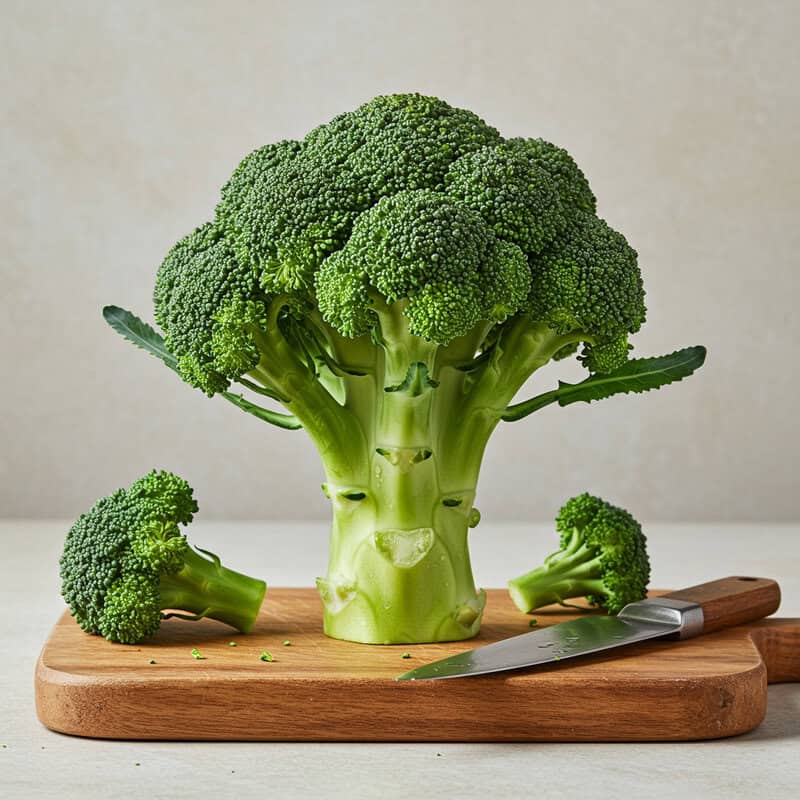
Broccoli is a nutritional powerhouse known for its inflammation-fighting abilities, largely due to a compound called sulforaphane. Sulforaphane helps lower inflammation by inhibiting the activation of nuclear factor kappa B (NF-κB), a molecule that triggers inflammatory responses in the body. Research has shown that regular consumption of broccoli can reduce levels of inflammatory biomarkers and may play a role in protecting against chronic diseases like cardiovascular disease and certain cancers.
Among the cruciferous vegetable family—which includes kale, Brussels sprouts, and cauliflower—broccoli is particularly rich in sulforaphane. While all cruciferous vegetables offer anti-inflammatory benefits, broccoli stands out for its higher concentration of this potent phytochemical. However, rotating a variety of cruciferous vegetables in your diet can maximize the range of nutrients and protective compounds you consume (Harvard Health).
To preserve and enhance sulforaphane content, lightly steam broccoli rather than boiling it, as prolonged heat can destroy valuable nutrients. You can also add raw broccoli florets to salads, blend them into smoothies, or toss them into stir-fries for a quick and healthy addition to any meal.
5. Turmeric
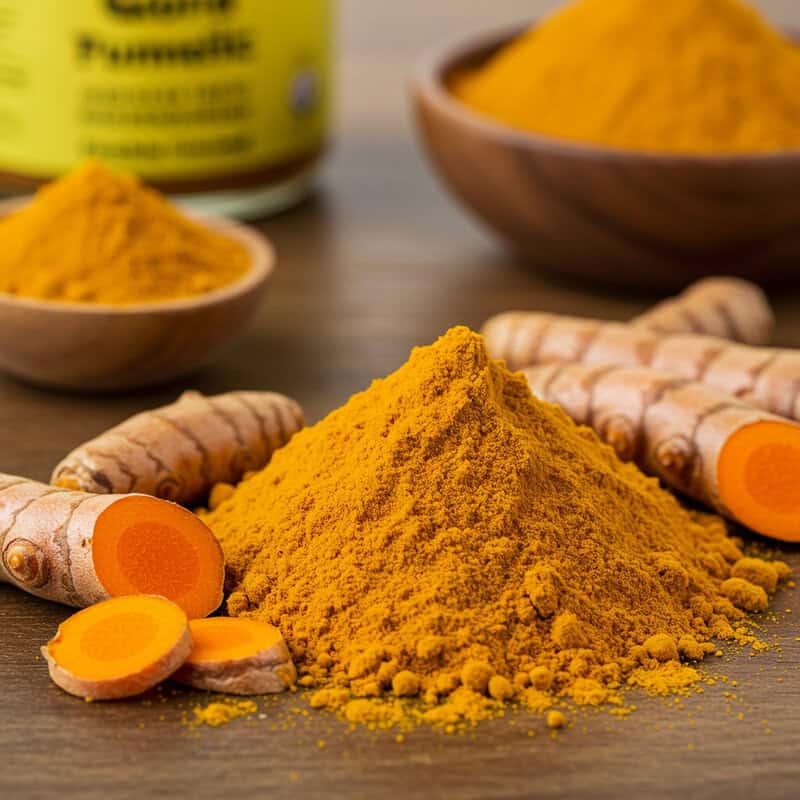
Turmeric is a golden-yellow spice widely recognized for its anti-inflammatory effects, primarily attributed to its active compound, curcumin. Curcumin works by blocking several inflammatory molecules, including nuclear factor-kappa B (NF-κB) and various cytokines, which play critical roles in the development and persistence of chronic inflammation. Research suggests that curcumin may help alleviate symptoms of inflammatory conditions such as arthritis and metabolic syndrome while supporting overall immune health.
While turmeric as a spice offers health benefits, many studies examining its anti-inflammatory effects use concentrated curcumin supplements, which provide much higher doses than typically consumed through food. Although supplements may deliver more potent results in clinical settings, culinary turmeric still contributes valuable phytonutrients and can be easily incorporated into daily meals (Harvard Health).
Curcumin’s natural bioavailability is low, meaning the body doesn’t absorb it efficiently. To enhance absorption, pair turmeric with black pepper, which contains piperine, or consume it alongside healthy fats like olive oil or avocado. Add turmeric to curries, soups, smoothies, or sprinkle onto roasted vegetables for both flavor and health benefits.
6. Walnuts
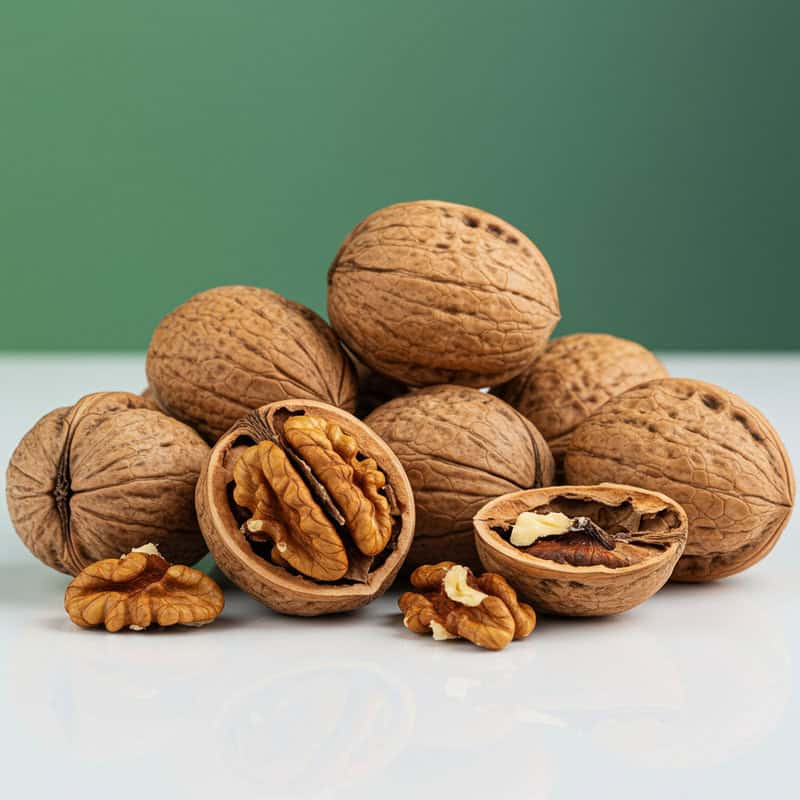
Walnuts are a powerful anti-inflammatory food due to their rich content of polyphenols and plant-based omega-3 fatty acids, particularly alpha-linolenic acid (ALA). The polyphenols in walnuts act as antioxidants, helping to neutralize free radicals and reduce oxidative stress, which is closely linked to chronic inflammation. Additionally, ALA supports the body’s inflammatory response by modulating pro-inflammatory cytokines and other signaling molecules. Research has shown that regular walnut consumption can lower inflammatory biomarkers, such as C-reactive protein, and potentially reduce the risk of heart disease and other inflammation-driven conditions (source).
When compared to almonds, walnuts offer distinct anti-inflammatory advantages thanks to their higher ALA content. While almonds are an excellent source of vitamin E and also provide anti-inflammatory benefits, they lack the significant omega-3 profile found in walnuts. Both nuts are healthy, but walnuts are particularly beneficial for targeting inflammation (Harvard Health).
Walnuts are versatile and easy to add to your diet. Enjoy them as a snack, sprinkle chopped walnuts over salads or oatmeal, blend them into smoothies, or use them as a crunchy topping for roasted vegetables and yogurt parfaits.
7. Spinach
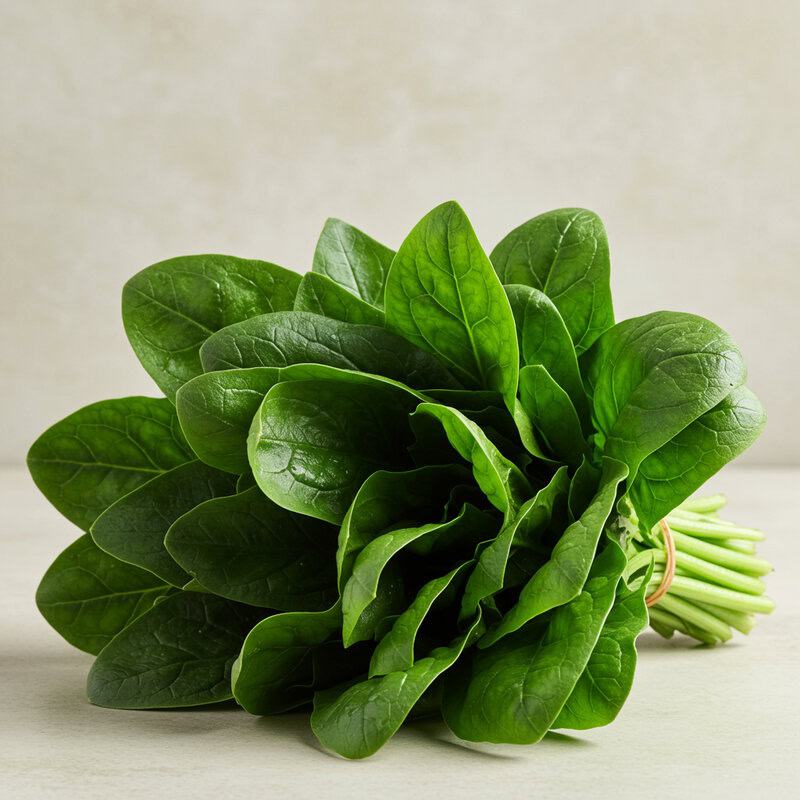
Spinach is packed with anti-inflammatory compounds, particularly flavonoids and carotenoids, which help modulate the body’s inflammatory response. These phytonutrients work by inhibiting the activity of inflammatory enzymes and reducing the production of pro-inflammatory cytokines. Studies have shown that diets rich in spinach are associated with lower levels of inflammatory markers and a decreased risk of chronic diseases, such as cardiovascular disease and certain cancers (source).
When compared to kale, another nutrient-dense leafy green, spinach stands out for its higher content of certain carotenoids like lutein and zeaxanthin, which are especially beneficial for eye health and inflammation. However, kale provides more vitamin C and vitamin K, both of which also play roles in controlling inflammation. For optimal health benefits, it’s wise to include both spinach and kale in your diet, as their nutrient profiles complement each other (Harvard Health).
Spinach can be enjoyed raw in salads and smoothies or lightly sautéed with olive oil and garlic. It also makes a nutritious addition to omelets, soups, pasta dishes, or as a base for grain bowls, providing an easy way to increase your intake of anti-inflammatory nutrients.
8. Tomatoes
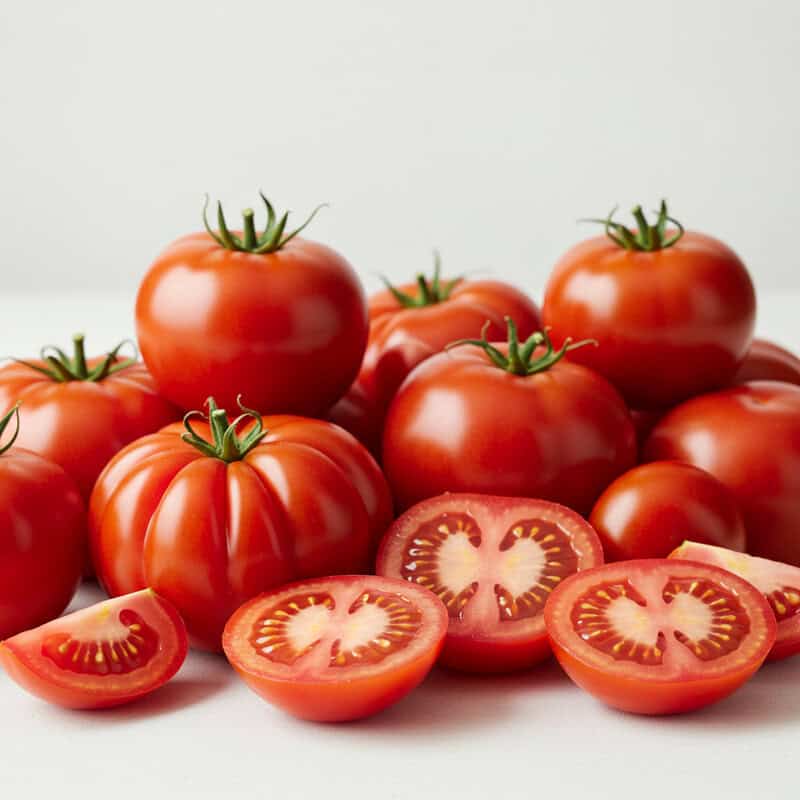
Tomatoes are a vibrant source of lycopene, a powerful antioxidant that plays a significant role in reducing inflammation. Lycopene works by neutralizing free radicals, which can damage cells and trigger inflammatory pathways in the body. Studies have found that higher intakes of lycopene are associated with decreased levels of inflammatory markers and a reduced risk of chronic illnesses such as cardiovascular disease and certain cancers (source).
When comparing raw and cooked tomatoes, cooked tomatoes deliver a higher amount of bioavailable lycopene, as the heating process breaks down the tomato cell walls and makes lycopene easier for the body to absorb. This means tomato sauces, soups, and stews can offer even more potent anti-inflammatory benefits than raw tomatoes. However, raw tomatoes still provide valuable vitamin C, fiber, and other antioxidants, making both forms beneficial in a balanced diet (Harvard Health).
Enjoy tomatoes fresh in salads, sandwiches, or salsas, and incorporate cooked tomatoes into pasta sauces, soups, chilis, or roasted vegetable dishes. Drizzling tomatoes with olive oil can further boost lycopene absorption and add extra anti-inflammatory power to your meals.
9. Ginger

Ginger is widely valued for its anti-inflammatory properties, primarily due to its active compound, gingerol. Gingerol has been shown to inhibit the production of pro-inflammatory cytokines and reduce the activity of enzymes, such as cyclooxygenase (COX), that contribute to inflammation. Clinical studies suggest that regular consumption of ginger can help alleviate symptoms of inflammatory conditions like osteoarthritis and may lower overall inflammation in the body (source).
When comparing fresh to powdered ginger, both forms offer anti-inflammatory benefits, but there are some differences. Fresh ginger contains higher levels of gingerol, which is more potent in its raw form. However, powdered ginger provides a convenient and concentrated source of the beneficial compounds, making it a practical choice for daily use. Each form can be used depending on the desired flavor and preparation method (Healthline).
To incorporate ginger into your daily routine, add freshly grated ginger to smoothies, stir-fries, or teas. Powdered ginger works well in baked goods, oatmeal, or spice blends. For best results, aim for a small daily amount, and pair with other anti-inflammatory foods for a synergistic effect.
10. Chia Seeds
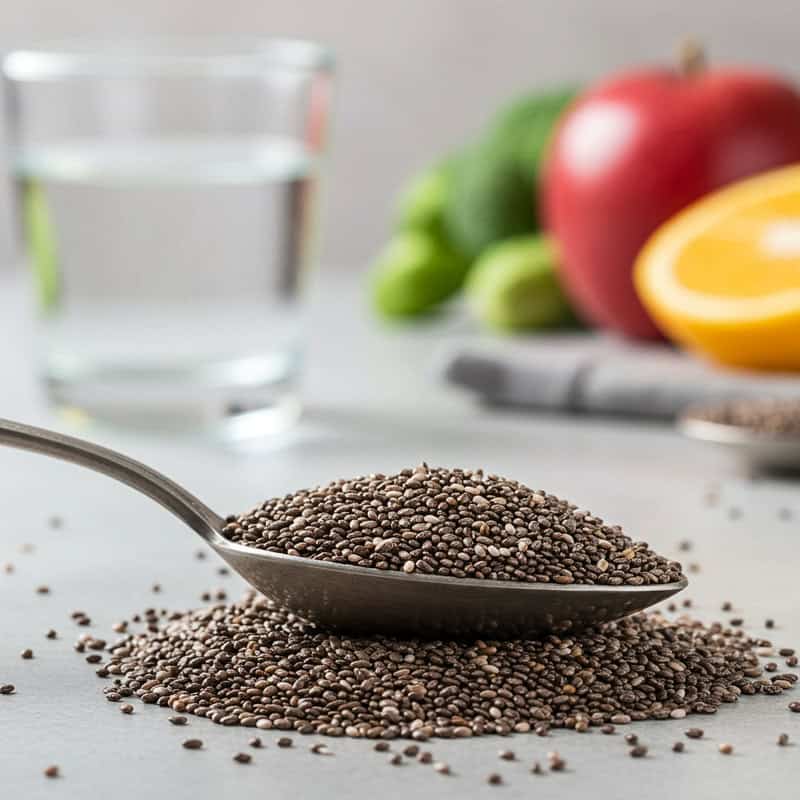
Chia seeds are a nutritional powerhouse, rich in alpha-linolenic acid (ALA), a plant-based omega-3 fatty acid known to help reduce inflammation in the body. The omega-3s in chia seeds work by modulating the inflammatory response and lowering the production of pro-inflammatory compounds. In addition to their healthy fats, chia seeds are high in soluble fiber, which supports gut health by feeding beneficial bacteria and further reducing inflammation through the production of short-chain fatty acids (source).
When compared to flaxseeds, chia seeds offer similar anti-inflammatory benefits due to their comparable omega-3 and fiber content. However, chia seeds have a slight advantage in convenience, as they do not require grinding for nutrient absorption, whereas flaxseeds are best consumed ground. Both seeds are excellent choices for supporting an anti-inflammatory diet (Healthline).
Incorporate chia seeds into your meals by adding them to smoothies, oatmeal, or yogurt. They can also be mixed with liquid to create chia pudding, sprinkled over salads, or used as an egg substitute in baking. Their mild flavor and versatility make them easy to enjoy daily.
11. Avocado
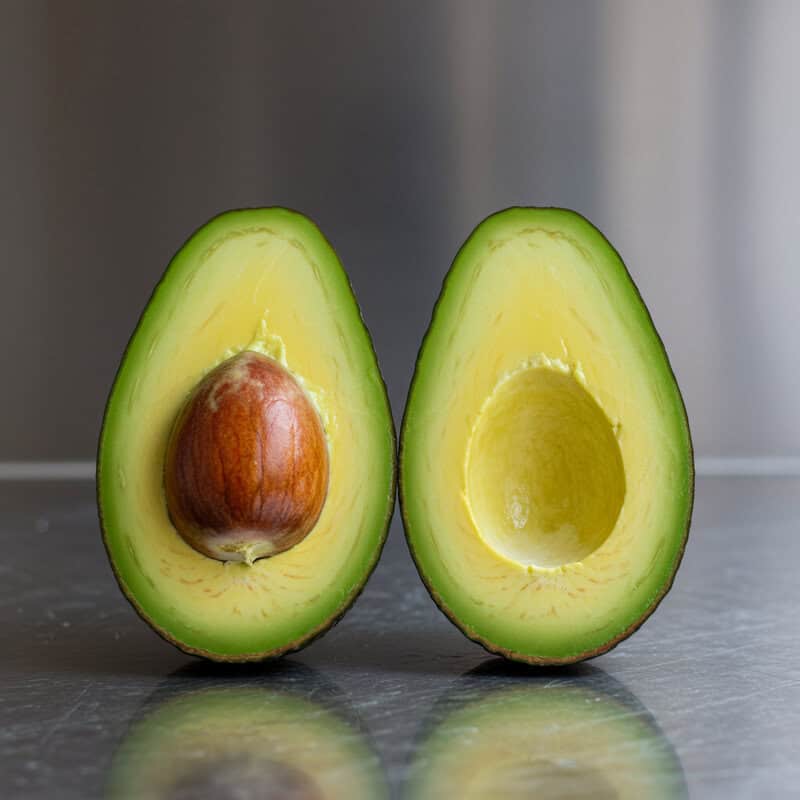
Avocado is an excellent source of monounsaturated fats, particularly oleic acid, which has been shown to reduce inflammation in the body. These healthy fats help lower levels of inflammatory markers, such as C-reactive protein, and can positively influence heart health and metabolic function. In addition to its fat profile, avocado contains antioxidants like vitamin E, lutein, and various carotenoids, all of which further contribute to its anti-inflammatory effects (source).
When compared to olive oil, another top source of monounsaturated fats, avocado offers similar anti-inflammatory benefits but also provides fiber, potassium, and a variety of vitamins and phytonutrients that olive oil lacks. Both foods are staples of the Mediterranean diet and work synergistically to reduce inflammation and promote overall health. While olive oil is typically used as a cooking fat, avocado can be enjoyed whole and incorporated into a wider range of meals (Harvard Health).
Avocado’s creamy texture and mild flavor make it easy to add to a variety of dishes. Enjoy it sliced on toast, cubed in salads, blended into smoothies, mashed as guacamole, or as a topping for grain bowls and tacos for a satisfying, anti-inflammatory boost.
12. Green Tea
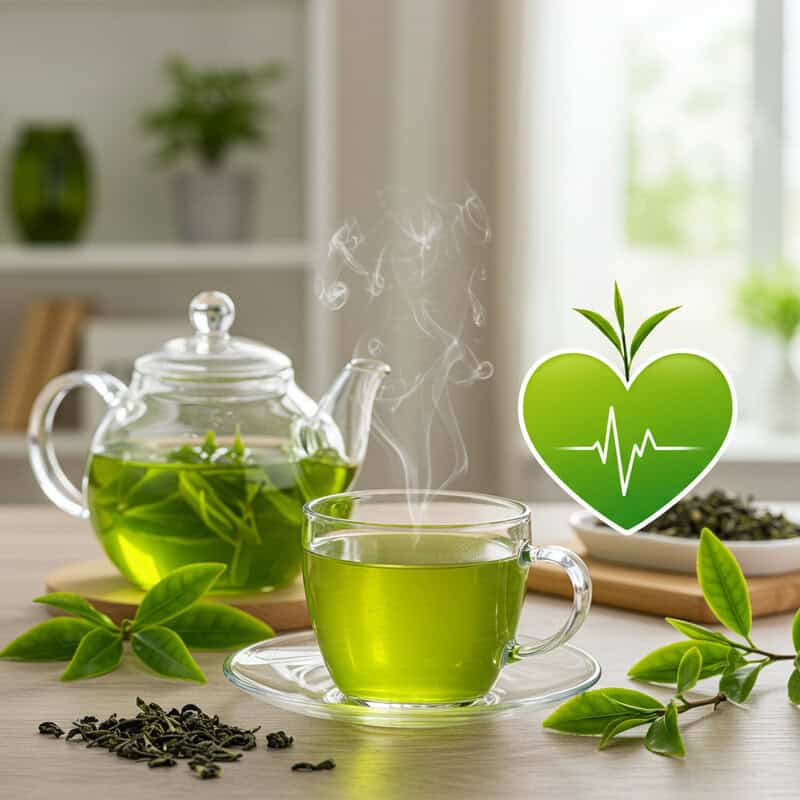
Green tea is celebrated for its high concentration of epigallocatechin gallate (EGCG), a powerful antioxidant and anti-inflammatory compound. EGCG works by inhibiting the expression of inflammatory cytokines and enzymes, such as tumor necrosis factor-alpha (TNF-α) and cyclooxygenase-2 (COX-2), which play key roles in chronic inflammation. Regular consumption of green tea has been linked to reduced markers of inflammation and a lower risk of developing diseases such as heart disease, diabetes, and certain cancers (source).
When compared to black tea, green tea generally contains higher levels of EGCG and other catechins, as it undergoes less oxidation during processing. While black tea also provides health benefits through its own polyphenols, green tea’s unique composition gives it a stronger anti-inflammatory profile. Both teas can be part of a healthy diet, but green tea is often recommended for those specifically aiming to reduce inflammation (Harvard Health).
For optimal benefits, brew green tea with water just below boiling (about 175°F or 80°C) for 2-3 minutes. This preserves the delicate catechins. Enjoy it plain, with a squeeze of lemon, or chilled as an iced tea for a refreshing, anti-inflammatory beverage.
13. Almonds
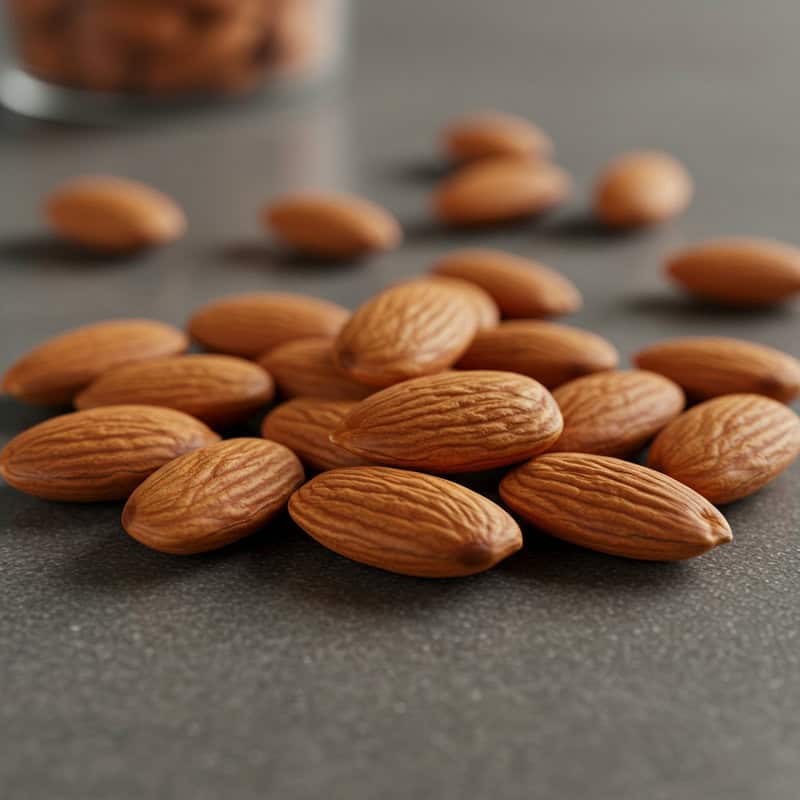
Almonds are packed with anti-inflammatory nutrients, most notably vitamin E and heart-healthy monounsaturated fats. Vitamin E acts as a powerful antioxidant, protecting cells from oxidative stress and dampening inflammatory processes in the body. The combination of vitamin E and healthy fats in almonds has been shown to reduce levels of inflammatory markers, such as C-reactive protein, and support cardiovascular health (source).
When compared to peanuts, almonds boast a higher vitamin E content and a more favorable fat profile, with less saturated fat and more monounsaturated fat per serving. Peanuts, while technically legumes, also provide protein and some anti-inflammatory benefits but are more commonly associated with allergies and may contain higher levels of omega-6 fatty acids, which can promote inflammation if consumed excessively. For individuals seeking to maximize anti-inflammatory effects, almonds are often the preferred choice (Harvard Health).
Almonds are a convenient and versatile snack. Enjoy them raw or dry-roasted, add to trail mixes, sprinkle over oatmeal or yogurt, or use almond butter as a spread for whole-grain toast and fruit. Their satisfying crunch and nutrient density make them an excellent addition to an anti-inflammatory diet.
14. Garlic

Garlic is well-known for its potent anti-inflammatory properties, primarily due to a sulfur-containing compound called allicin. Allicin forms when fresh garlic is chopped or crushed and works by inhibiting the production of pro-inflammatory cytokines and enzymes involved in the body’s inflammatory response. Research has shown that garlic can help decrease markers of inflammation and may offer protective benefits against chronic conditions such as cardiovascular disease and arthritis.
Fresh garlic contains the highest concentration of allicin, especially when it is raw and freshly chopped or crushed, as heat can destroy some of the beneficial compounds. Cooked garlic still offers health benefits, thanks to other sulfur compounds formed during heating, but its anti-inflammatory effect may be somewhat reduced compared to raw garlic. Both forms, however, can be part of a healthy, inflammation-fighting diet (Healthline).
Culinary uses for garlic are nearly endless. Add fresh, minced garlic to salad dressings, salsas, or dips for a pungent kick. Roasted garlic can be spread on whole-grain bread, stirred into mashed potatoes, or blended into soups and sauces. For maximum benefit, let chopped garlic rest for a few minutes before cooking to boost allicin formation.
15. Red Grapes

Red grapes are celebrated for their content of resveratrol, a polyphenol that exerts strong anti-inflammatory effects. Resveratrol helps inhibit the activity of inflammatory enzymes and blocks the production of pro-inflammatory molecules such as cytokines and NF-κB. Studies suggest that regular consumption of resveratrol-rich foods like red grapes can lower inflammation and may reduce the risk of chronic diseases, including heart disease, diabetes, and certain cancers (source).
When comparing red grapes to white grapes, the red variety contains significantly higher levels of resveratrol, anthocyanins, and other antioxidant compounds, thanks to their richly pigmented skins. White grapes have some health benefits but lack the robust anti-inflammatory profile provided by the polyphenols concentrated in red grapes. For those seeking the greatest anti-inflammatory impact, red or purple grapes are the superior choice (Healthline).
Red grapes make a convenient and refreshing snack on their own or paired with nuts for a balanced treat. Try adding them to fruit salads, yogurt parfaits, or whole-grain salads. They also combine well with cheese for a savory-sweet appetizer or can be frozen for a cool, bite-sized dessert.
16. Sweet Potatoes
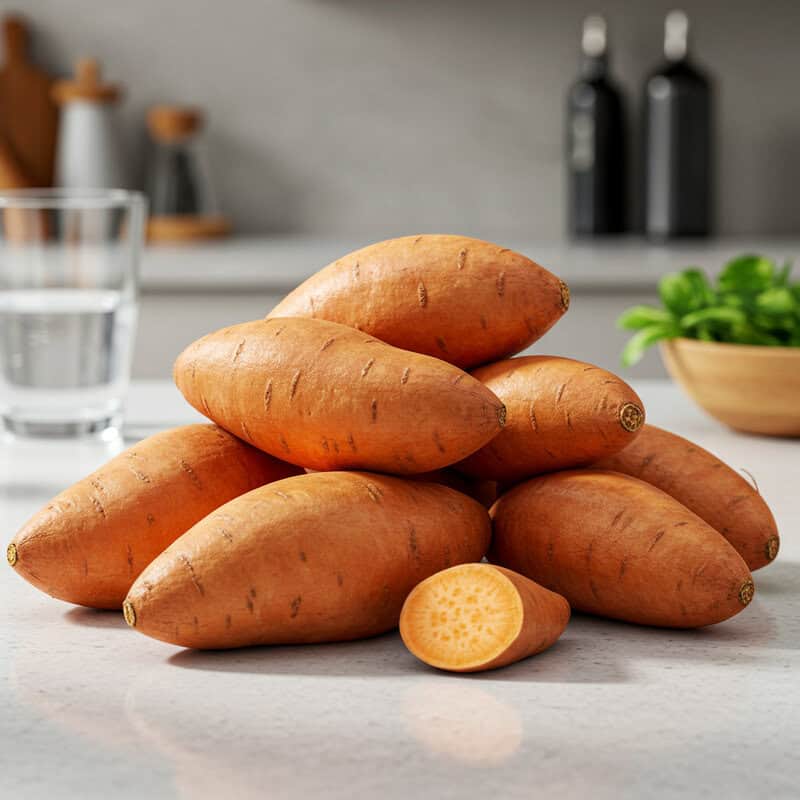
Sweet potatoes are a rich source of beta-carotene, a powerful antioxidant that is converted to vitamin A in the body. Beta-carotene helps reduce inflammation by neutralizing free radicals and supporting immune system function. Research shows that beta-carotene can lower levels of inflammatory markers and may play a protective role against chronic diseases such as heart disease and certain cancers (source). Additionally, sweet potatoes contain other nutrients with anti-inflammatory effects, including vitamin C, potassium, and fiber, all of which contribute to overall health.
Compared to white potatoes, sweet potatoes offer a higher concentration of antioxidants, especially beta-carotene, and have a lower glycemic index, which means they are less likely to cause spikes in blood sugar—an important factor for managing inflammation. White potatoes provide some beneficial nutrients but lack the vibrant array of anti-inflammatory carotenoids found in sweet potatoes (Harvard Health).
Sweet potatoes can be enjoyed roasted, baked, or mashed. Slice them into wedges for oven fries, add cubes to soups and stews, or blend into smoothies for a creamy, nutrient-rich base. For a quick side, try baked sweet potato topped with a drizzle of olive oil and a sprinkle of cinnamon.
17. Beets
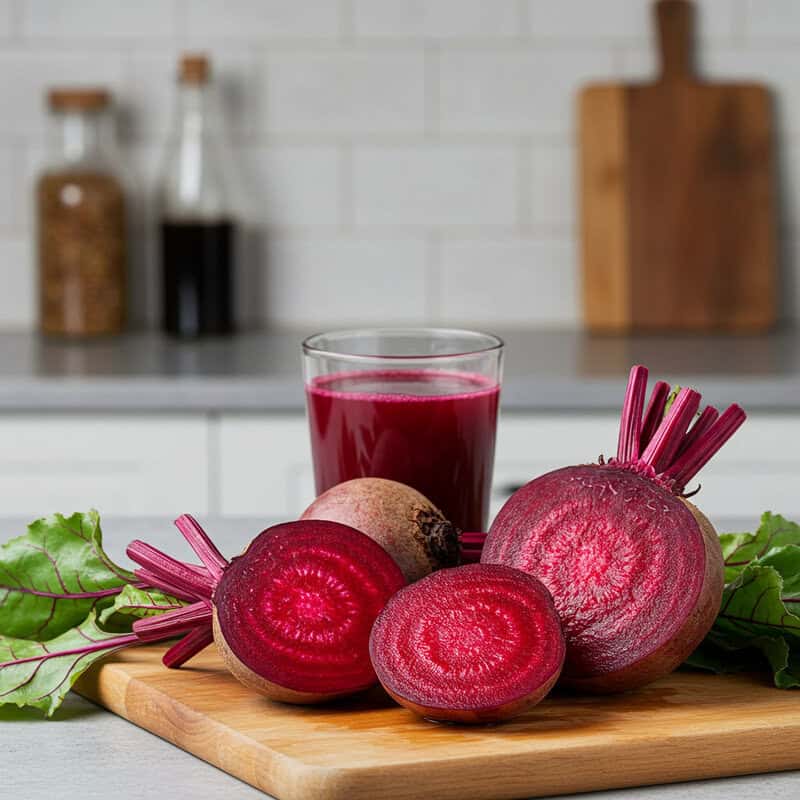
Beets are known for their vibrant color and potent anti-inflammatory properties, primarily due to a group of phytonutrients called betalains. Betalains act as antioxidants, neutralizing harmful free radicals and suppressing key inflammatory pathways in the body. Research indicates that regular beet consumption can help lower inflammation markers, support vascular health, and may reduce the risk of chronic conditions like heart disease and certain cancers (source). In addition to betalains, beets are rich in fiber, folate, and vitamin C, all of which contribute to their inflammation-fighting effects.
When compared to carrots, beets provide a unique set of antioxidants. While carrots are high in beta-carotene and offer their own anti-inflammatory benefits, beets’ betalains are not found in most other root vegetables. Carrots and beets both support overall health, but incorporating beets into your diet can provide a broader spectrum of phytonutrients and anti-inflammatory compounds (Healthline).
Beets can be enjoyed roasted, boiled, or steamed, and their natural sweetness pairs well with both savory and sweet dishes. Try adding sliced beets to salads, blending them into smoothies, or making a beet hummus. Roasting brings out their earthy flavor and enhances their natural sugars.
18. Black Beans
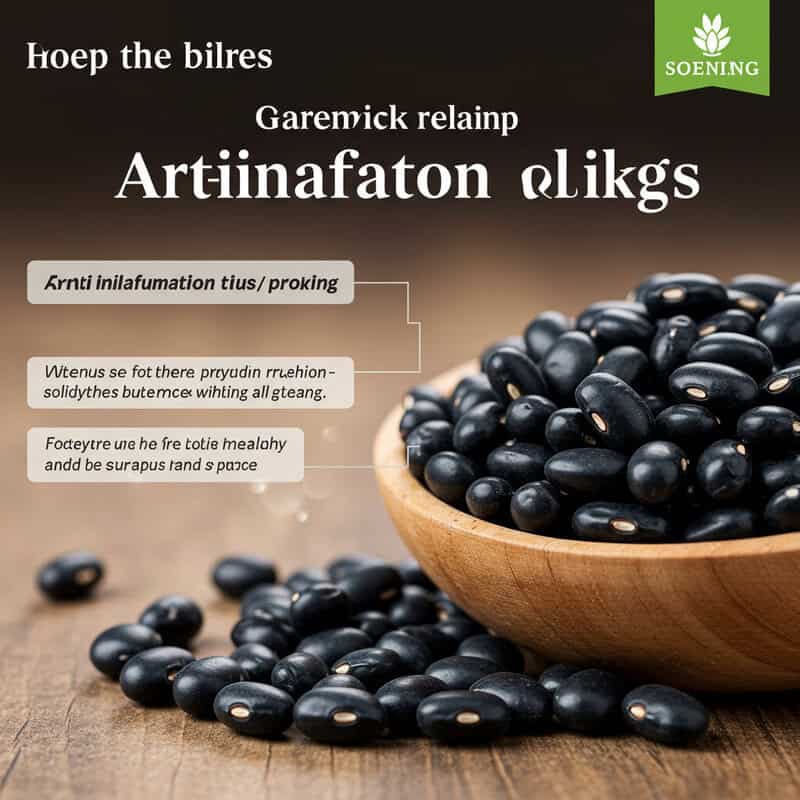
Black beans are a fantastic source of anti-inflammatory nutrients, especially polyphenols and fiber. The polyphenols found in black beans, such as anthocyanins, act as antioxidants that help combat oxidative stress and decrease inflammation throughout the body. Additionally, the high fiber content in black beans supports gut health by nourishing beneficial gut bacteria, which in turn can help regulate the body’s inflammatory response. Studies have shown that regular consumption of black beans is associated with lower levels of inflammatory markers and a reduced risk of chronic illnesses, including heart disease and diabetes (source).
Compared to kidney beans, black beans contain higher levels of certain polyphenols, particularly anthocyanins, which give them their dark color and extra antioxidant power. While both bean varieties are excellent choices for supporting an anti-inflammatory diet, black beans may offer a slight edge due to their richer phytonutrient profile (Healthline).
Incorporate black beans into your meals by adding them to salads, soups, or grain bowls. They’re also delicious in tacos, chili, or blended into dips like black bean hummus. Their mild flavor and creamy texture make them a versatile ingredient for both savory and even some sweet dishes, like brownies.
19. Oranges

Oranges are celebrated for their high vitamin C content, a potent antioxidant that plays a crucial role in reducing inflammation by neutralizing free radicals and supporting immune function. In addition to vitamin C, oranges are rich in flavanones, particularly hesperidin and naringenin, which have been shown to inhibit inflammatory processes at the cellular level. Research suggests that a diet abundant in vitamin C and flavanones can help lower inflammatory markers and reduce the risk of chronic conditions such as cardiovascular disease (source).
When compared to grapefruits, oranges offer similar anti-inflammatory benefits, as both citrus fruits are good sources of vitamin C and flavanones. However, oranges typically contain higher levels of vitamin C and are lower in bitterness, making them more palatable for many people. Grapefruits, while beneficial, can interact with certain medications, so oranges are often the safer and more widely enjoyed choice (Healthline).
To add more oranges to your diet, enjoy them as a snack, add segments to salads, blend into smoothies, or use their juice as a base for vinaigrettes. Pair orange slices with yogurt, oats, or cottage cheese for a refreshing and nutritious start to your day.
20. Sardines

Sardines are a nutrient-dense fish rich in omega-3 fatty acids, particularly EPA and DHA, which are known for their powerful anti-inflammatory properties. These healthy fats help reduce the production of inflammatory molecules, supporting heart, brain, and joint health. Sardines are also an excellent source of selenium, a mineral that acts as an antioxidant and further helps lower inflammation by protecting cells from oxidative stress. Regular consumption of sardines has been linked to reduced risk of chronic diseases, including cardiovascular disease and autoimmune disorders (source).
When compared to mackerel, another oily fish, sardines offer a similar omega-3 profile but tend to have lower mercury levels due to their smaller size and shorter lifespan. While both fish are excellent choices for an anti-inflammatory diet, sardines are often considered a safer and more sustainable option, especially for frequent consumption (Healthline).
To enjoy sardines, try them grilled, added to salads, or served on whole-grain toast with a squeeze of lemon. Canned sardines are convenient and can be mixed into pasta dishes, grain bowls, or mashed with avocado for a quick, nutrient-packed spread. Opt for varieties packed in water or olive oil for the healthiest choice.
21. Strawberries

Strawberries are packed with anthocyanins, a class of antioxidants responsible for their vibrant red hue and potent anti-inflammatory benefits. Anthocyanins work by inhibiting the production of pro-inflammatory chemicals and protecting cells from oxidative damage. Research shows that regular consumption of strawberries can significantly lower levels of C-reactive protein, an important marker of inflammation, and may help reduce the risk of heart disease, diabetes, and certain cancers (source).
When compared to raspberries, strawberries contain a similar range of antioxidant compounds, but in different proportions. Both berries are excellent sources of vitamin C, fiber, and polyphenols, yet strawberries typically contain higher levels of certain anthocyanins, while raspberries are richer in ellagitannins—another group of beneficial polyphenols. Including a mix of berries in your diet ensures a broad spectrum of anti-inflammatory phytochemicals (Healthline).
Strawberries are endlessly versatile. Enjoy them fresh as a snack, add them to yogurt or oatmeal, blend them into smoothies, or toss them into salads for a burst of sweetness. For a simple dessert, try dipping strawberries in dark chocolate or freezing them for a cool, satisfying treat.
22. Brussels Sprouts
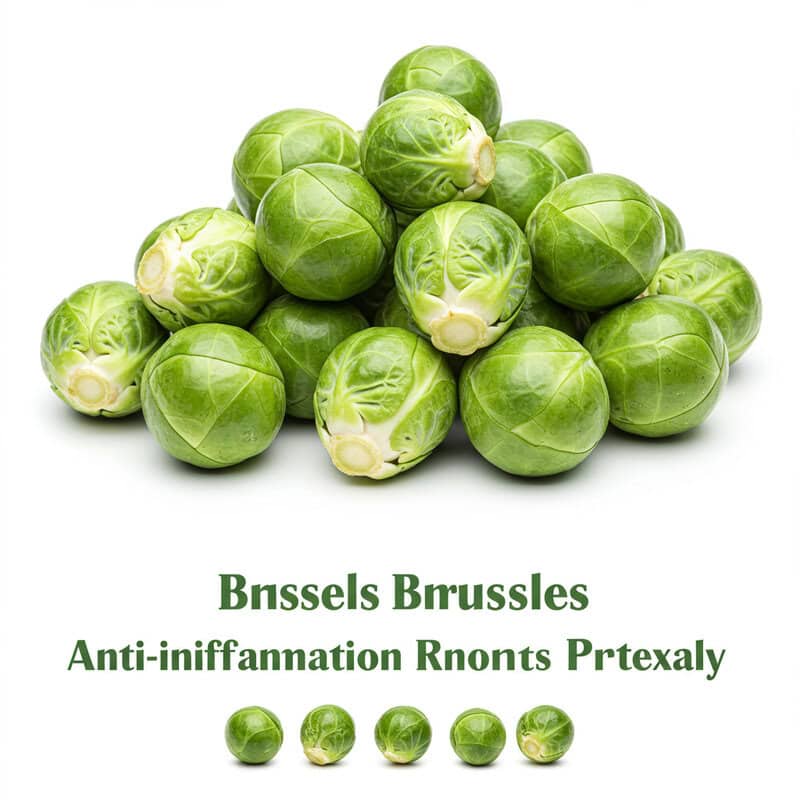
Brussels sprouts are highly valued for their concentration of glucosinolates, natural compounds with potent anti-inflammatory properties. When consumed, glucosinolates are broken down into biologically active compounds like sulforaphane and indole-3-carbinol, which help modulate inflammation by inhibiting pro-inflammatory enzymes and signaling pathways. Studies suggest that regularly eating Brussels sprouts can lower markers of inflammation and may provide protection against certain cancers and chronic diseases (source).
Compared to cabbage, another cruciferous vegetable, Brussels sprouts provide similar anti-inflammatory benefits but in a more concentrated form due to their denser composition. Both vegetables are rich in fiber, vitamins C and K, and glucosinolates, but Brussels sprouts may offer a slightly higher amount of certain protective phytochemicals per serving. Including a variety of cruciferous vegetables in your diet helps maximize your intake of these beneficial compounds (Healthline).
Brussels sprouts are delicious roasted with olive oil, garlic, and a pinch of sea salt, which brings out their natural sweetness and crisp texture. You can also steam or sauté them, shred them raw into salads, or toss them with balsamic glaze for a flavorful side dish.
23. Flaxseeds
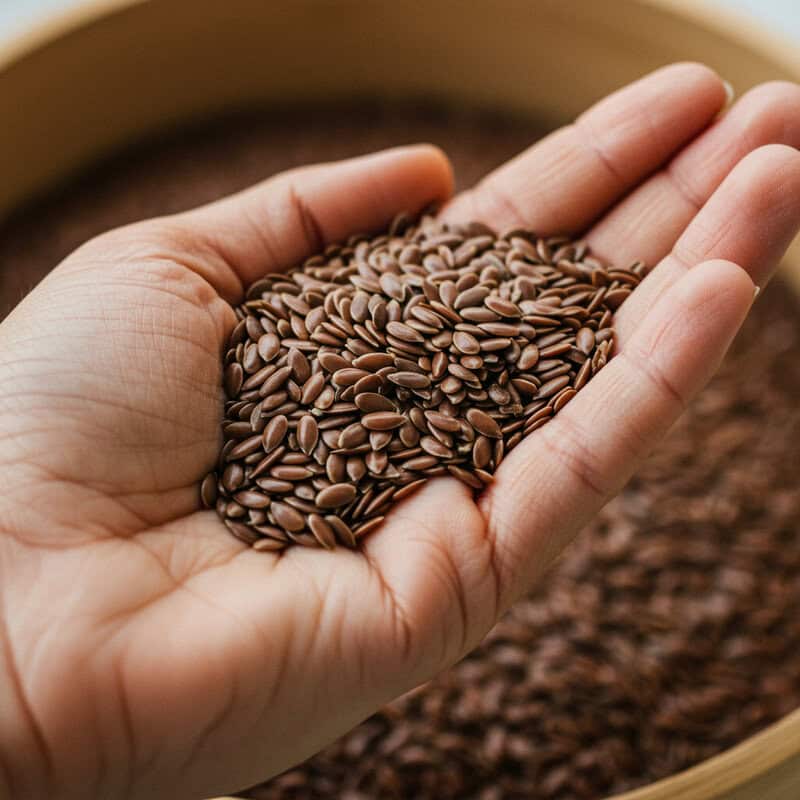
Flaxseeds are a powerhouse of anti-inflammatory nutrients, most notably alpha-linolenic acid (ALA), a plant-based omega-3 fatty acid, and lignans, which are antioxidant-rich polyphenols. ALA helps reduce inflammation by influencing inflammatory signaling pathways and lowering circulating levels of pro-inflammatory molecules in the body. Lignans, on the other hand, offer additional protection by reducing oxidative stress and supporting hormonal balance. Studies have shown that regular consumption of flaxseeds can help lower inflammatory markers and may decrease the risk of chronic diseases such as heart disease and certain cancers (source).
When compared to chia seeds, flaxseeds offer similar anti-inflammatory benefits, as both are rich in ALA and dietary fiber. However, flaxseeds stand out as the richest source of lignans among plant foods, while chia seeds are slightly easier to incorporate into recipes because they don’t require grinding for absorption. Both seeds are excellent choices, but flaxseeds provide a unique lignan advantage (Healthline).
To maximize nutrient absorption, use ground flaxseeds rather than whole seeds. Sprinkle ground flaxseeds on oatmeal, yogurt, or salads, mix them into smoothies or baked goods, or stir into soups and stews for a subtle, nutty flavor and a daily anti-inflammatory boost.
24. Pineapple

Pineapple is renowned for its high content of bromelain, an enzyme with notable anti-inflammatory and digestive benefits. Bromelain works by breaking down proteins and modulating the body’s inflammatory response, helping to reduce swelling, support tissue repair, and lower levels of pro-inflammatory compounds. Research indicates that bromelain may be effective in alleviating symptoms of inflammatory conditions such as arthritis and sinusitis, and can even help reduce muscle soreness after exercise (source).
When compared to papaya, which contains its own anti-inflammatory enzyme called papain, pineapple provides a unique advantage due to bromelain’s potent effects on both inflammation and digestion. Both fruits are rich in vitamin C and other antioxidants, but pineapple’s bromelain content makes it especially helpful for managing inflammation and promoting recovery after injury or strenuous activity (Healthline).
Pineapple is delicious fresh, grilled, or blended into smoothies. Add pineapple chunks to fruit salads, salsas, or yogurt parfaits for a tropical twist. You can also use pineapple as a tenderizing marinade for meats or as a sweet, tangy addition to stir-fries and skewers for an extra anti-inflammatory punch.
25. Kale
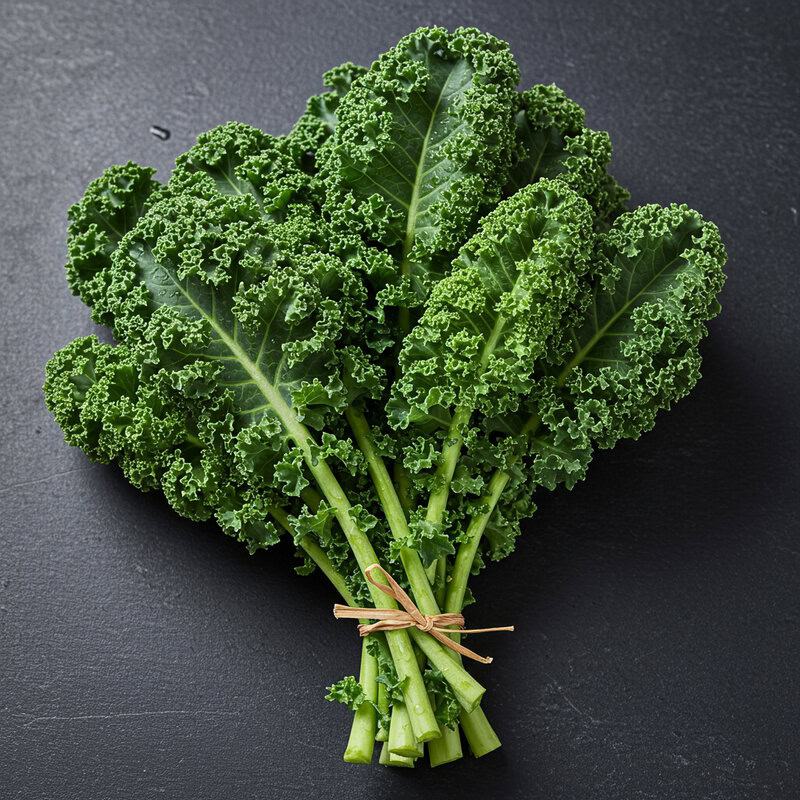
Kale is widely recognized as a nutritional powerhouse, packed with antioxidants such as quercetin and kaempferol, as well as vitamins A, C, and K. These antioxidants help combat oxidative stress and reduce inflammation by neutralizing free radicals and inhibiting key inflammatory pathways in the body. Kale’s abundance of vitamin C strengthens immune function, while vitamin K is important for regulating inflammation and supporting bone health. Regular consumption of kale has been linked to lower levels of inflammatory markers and a reduced risk of chronic diseases, including heart disease and certain cancers (source).
When compared to spinach, kale offers higher levels of vitamins C and K, along with a different mix of phytonutrients. While spinach provides more lutein and zeaxanthin, which are particularly beneficial for eye health, kale stands out for its robust anti-inflammatory vitamin profile. Including both leafy greens in your diet ensures a diverse array of nutrients and health benefits (Healthline).
Kale can be enjoyed raw in salads or smoothies, massaged with olive oil and lemon juice to soften its texture, or sautéed with garlic as a savory side dish. It also makes a crunchy, nutritious snack when baked into kale chips.
26. Bell Peppers

Bell peppers are an excellent source of vitamin C and a variety of carotenoids, including beta-carotene, lutein, and zeaxanthin, all of which play a crucial role in combating inflammation. Vitamin C acts as a potent antioxidant, reducing oxidative stress and supporting immune health, while carotenoids help inhibit inflammatory signaling pathways and protect cells from damage. Research has shown that regular consumption of bell peppers can help lower levels of inflammatory markers and may reduce the risk of chronic diseases like cardiovascular disease and certain cancers (source).
The anti-inflammatory and antioxidant content of bell peppers varies by color. Red bell peppers are the richest in vitamin C and carotenoids, followed by yellow and orange varieties, with green peppers containing the lowest levels since they are harvested before fully ripening. Each color offers unique phytonutrients, so incorporating a mix of bell pepper colors can maximize health benefits (Healthline).
Bell peppers are extremely versatile in the kitchen. Enjoy them raw as a crisp snack, sliced into salads, or paired with hummus. They can also be roasted, grilled, or stuffed with whole grains and veggies, or added to stir-fries, omelets, and fajitas for extra color and flavor.
27. Pumpkin Seeds
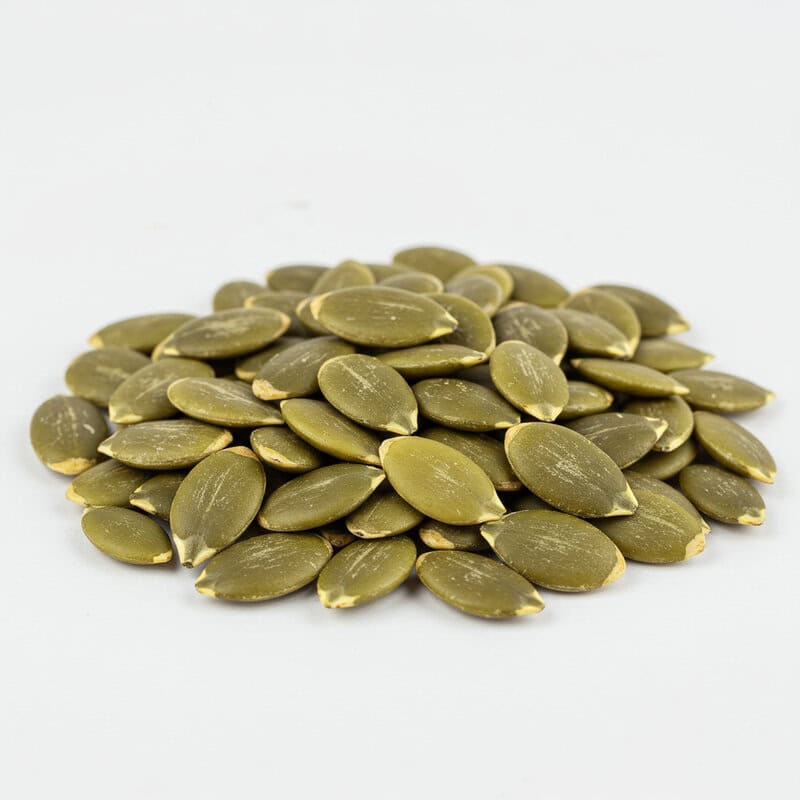
Pumpkin seeds, also known as pepitas, are a rich source of magnesium and antioxidants, both of which play vital roles in reducing inflammation. Magnesium is essential for regulating inflammatory responses, supporting muscle and nerve function, and maintaining heart health. Antioxidants such as vitamin E and various phenolic compounds found in pumpkin seeds help neutralize free radicals, thereby decreasing oxidative stress and overall inflammation in the body. Studies have linked higher magnesium intake with lower levels of inflammatory markers and a decreased risk of chronic conditions like type 2 diabetes and cardiovascular disease (source).
When compared to sunflower seeds, pumpkin seeds generally offer more magnesium and zinc, while sunflower seeds provide higher levels of vitamin E. Both seeds contain healthy fats and beneficial plant compounds, but pumpkin seeds stand out for their superior mineral content, particularly magnesium, which is often lacking in modern diets (Healthline).
Pumpkin seeds make an easy and satisfying snack on their own, either raw or roasted. They can also be sprinkled on salads, yogurt, oatmeal, or smoothie bowls. For a savory twist, toss roasted pumpkin seeds with spices such as paprika, garlic powder, or cumin for extra flavor and nutrition.
28. Apples

Apples are a standout fruit for their rich content of quercetin, a flavonoid with potent anti-inflammatory and antioxidant effects. Quercetin helps inhibit the production of inflammatory mediators and supports the body’s defense against oxidative stress. Apples are also loaded with other polyphenols, which collectively contribute to reducing inflammation and lowering the risk of chronic diseases such as heart disease, diabetes, and certain cancers (source). The fiber in apples, especially pectin, further supports gut health, which is closely linked to systemic inflammation.
Different apple varieties offer varying levels of polyphenols and quercetin. Red-skinned apples, such as Red Delicious and Fuji, tend to have the highest antioxidant content due to their deep color, while Granny Smith apples are noted for their lower sugar content and tart flavor. Regardless of the variety, eating apples with the skin on maximizes intake of beneficial compounds (Healthline).
To eat more apples, enjoy them sliced with nut butter, chopped in salads, or baked with cinnamon for a healthy dessert. Apples can also be added to oatmeal, blended into smoothies, or grated into slaws. Their versatility and natural sweetness make them a convenient anti-inflammatory snack.
29. Yogurt with Live Cultures
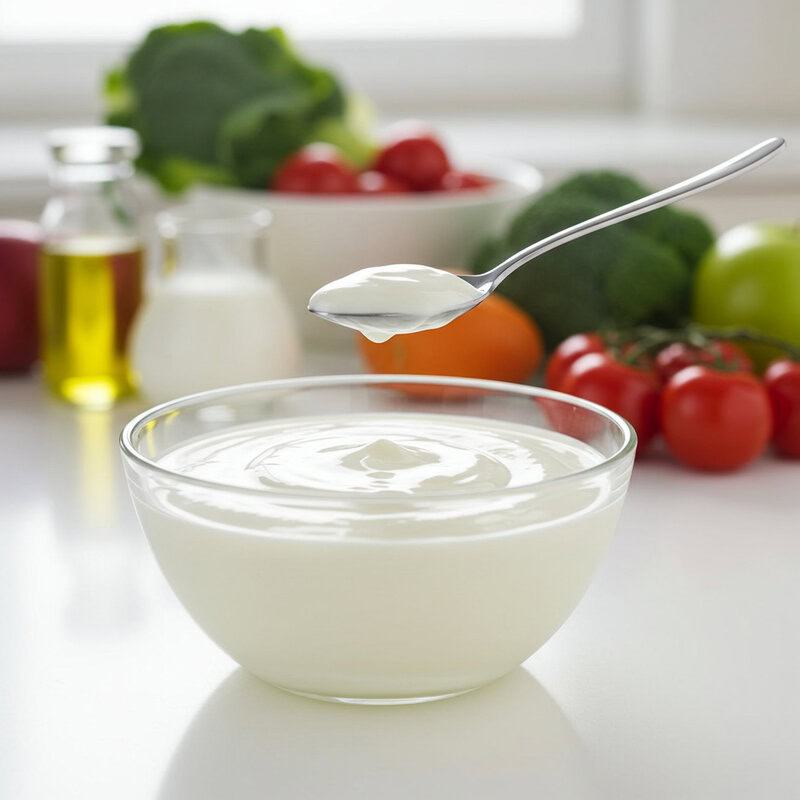
Yogurt with live cultures is a valuable addition to an anti-inflammatory diet due to its probiotic content. Probiotics are beneficial bacteria that help balance the gut microbiome, support immune function, and reduce gut inflammation. Research shows that consuming probiotic-rich foods like yogurt can lower levels of inflammatory markers, improve digestive health, and even help regulate systemic inflammation associated with chronic diseases (source).
When comparing Greek yogurt to regular yogurt, Greek yogurt typically offers higher protein content and a thicker, creamier texture, while still providing live cultures for gut health. Both types can be excellent sources of probiotics, but it’s important to choose varieties labeled with “live and active cultures.” Greek yogurt’s higher protein may also help keep you full longer, making it a preferred choice for some people (Healthline).
For maximum anti-inflammatory benefit, select plain yogurt with no added sugars, as excess sugar can promote inflammation. Add your own fruit, nuts, or seeds for flavor and texture. Use yogurt as a base for smoothies, salad dressings, or as a topping for oatmeal and whole grain dishes.
30. Mushrooms (Shiitake, Maitake, Reishi)
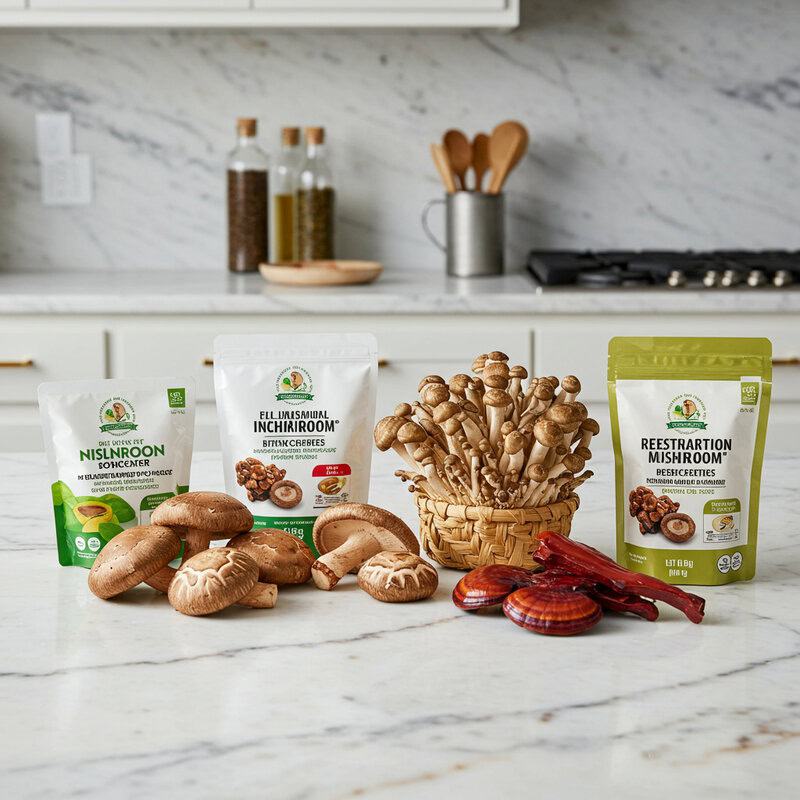
Mushrooms such as shiitake, maitake, and reishi are renowned for their anti-inflammatory properties, primarily due to compounds like beta-glucans and ergothioneine. Beta-glucans are unique polysaccharides that modulate the immune system, helping to reduce excessive inflammation and enhance immune defense. Ergothioneine, a potent antioxidant found almost exclusively in mushrooms, protects cells from oxidative stress and may play a role in suppressing inflammatory pathways (source).
Shiitake and maitake mushrooms are prized for their rich flavor and high beta-glucan content, making them excellent choices for supporting immune health and reducing inflammation. Reishi, often used in medicinal preparations, is especially valued for its adaptogenic and anti-inflammatory effects, although it is less commonly consumed as a culinary mushroom. Each type offers a unique profile of nutrients and beneficial compounds, so a varied mushroom intake can maximize health benefits (Healthline).
Incorporate mushrooms by sautéing shiitake or maitake in olive oil as a savory side, adding them to soups, stir-fries, or omelets, or using dried reishi to brew a calming tea. Their umami flavor enhances a wide range of dishes while providing a powerful anti-inflammatory boost.
31. Lentils
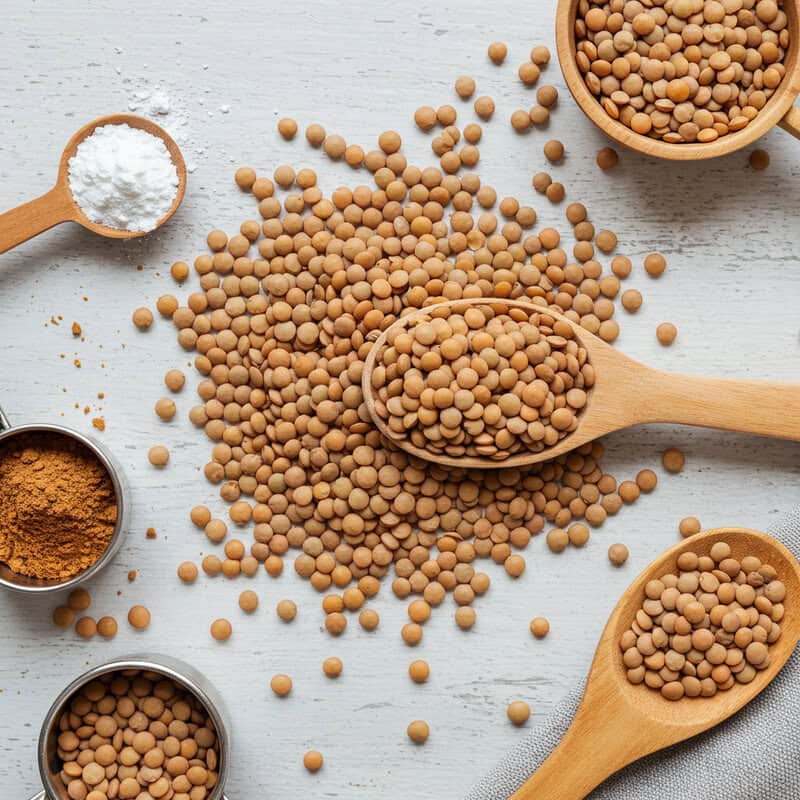
Lentils are a nutritious legume packed with polyphenols and dietary fiber, both of which play significant roles in reducing inflammation. Polyphenols, such as flavonoids and phenolic acids, act as powerful antioxidants that neutralize free radicals and inhibit inflammatory pathways in the body. The high fiber content in lentils supports a healthy gut microbiome by feeding beneficial bacteria, which in turn promotes an anti-inflammatory environment throughout the digestive tract. Regular consumption of lentils has been linked to lower levels of inflammatory markers and a reduced risk of chronic diseases like heart disease and diabetes (source).
When compared to chickpeas, lentils have a slightly higher protein and fiber content per serving and contain different types of polyphenols. Both legumes are excellent for inflammation control, but lentils cook faster and are often more versatile in soups and stews. Chickpeas, on the other hand, are commonly used in dishes like hummus and salads (Healthline).
Incorporate lentils into your meals by adding them to soups, stews, curries, or salads. They can also be used in veggie burgers, casseroles, or as a filling for wraps and stuffed vegetables, providing a hearty, anti-inflammatory boost to any dish.
32. Pomegranate
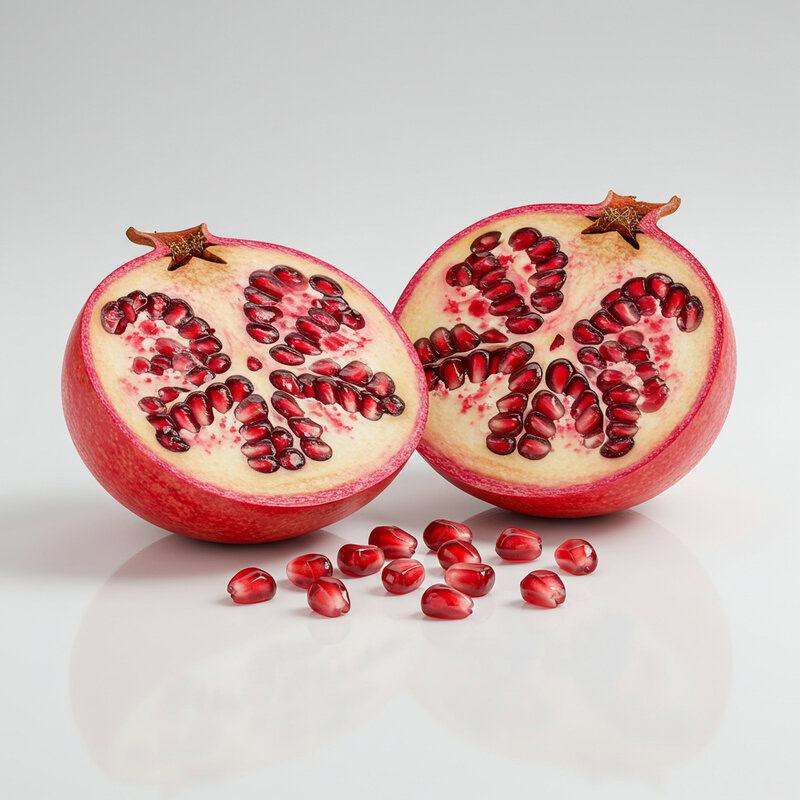
Pomegranate is celebrated for its high content of punicalagin, a potent polyphenol that exerts strong anti-inflammatory and antioxidant effects. Punicalagin works by suppressing the activity of pro-inflammatory enzymes and inhibiting the production of cytokines that drive chronic inflammation. Research indicates that regular consumption of pomegranate juice or seeds can significantly lower markers of inflammation and may help protect against heart disease, arthritis, and certain cancers (source).
When compared to cranberries, pomegranates contain a broader range of polyphenols, with punicalagin being especially unique and more abundant than the proanthocyanidins found in cranberries. Both fruits are rich in vitamin C and antioxidants, but pomegranates offer a particularly powerful anti-inflammatory punch due to their unique compound profile. Cranberries are also healthy but are more commonly consumed dried or as juice with added sugars, which can diminish some of their benefits (Healthline).
To enjoy more pomegranate, sprinkle the seeds over salads, yogurt, or oatmeal, blend them into smoothies, or use the juice as a flavorful base for vinaigrettes and marinades. Their sweet-tart flavor and vibrant color make pomegranates a delicious and attractive addition to a variety of dishes.
33. Oats
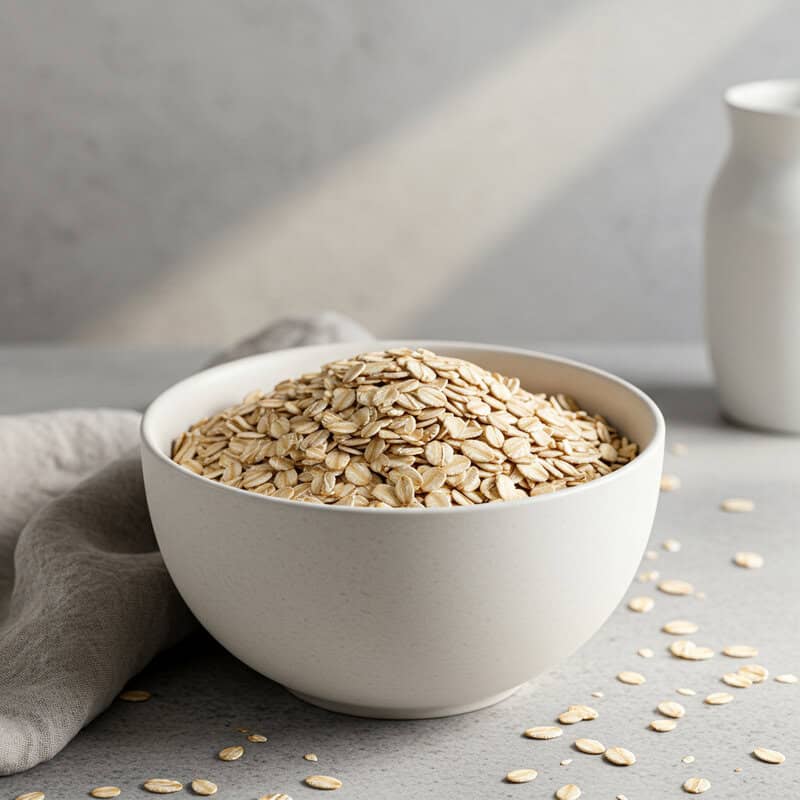
Oats are a nutritional powerhouse, especially known for their high content of beta-glucan, a unique soluble fiber with proven anti-inflammatory benefits. Beta-glucan helps modulate the immune system, lower cholesterol, and reduce the production of pro-inflammatory cytokines in the body. Research indicates that regular oat consumption can decrease markers of systemic inflammation and support cardiovascular health, making oats an excellent choice for those seeking to quiet chronic inflammation (source).
When compared to wheat, oats are naturally gluten-free (though cross-contamination may occur in processing) and contain a higher proportion of soluble fiber, particularly beta-glucan. Wheat provides beneficial fiber as well, but its primary fiber is insoluble, which doesn’t offer the same immune-modulating benefits as beta-glucan. Additionally, oats are generally better tolerated by those with gluten sensitivities (Healthline).
Oats are incredibly versatile for breakfast. Enjoy them as classic oatmeal, overnight oats, or baked oatmeal bars. Stir oats into smoothies, use them as a base for homemade granola, or blend into pancakes. Top with berries, nuts, seeds, and a drizzle of honey or yogurt for a nutrient-packed, anti-inflammatory start to your day.
34. Seaweed

Seaweed is a nutrient-dense marine vegetable packed with unique anti-inflammatory compounds, notably fucoidan and phlorotannins. Fucoidan, a type of sulfated polysaccharide found mainly in brown seaweeds like wakame and kombu, has been shown to suppress inflammatory cytokines and support immune function. Phlorotannins, potent antioxidants specific to seaweed, help neutralize free radicals and further reduce inflammation. Regular consumption of seaweed is associated with lower levels of inflammatory markers and may offer protection against chronic diseases such as heart disease and metabolic syndrome (source).
Different types of seaweed offer varying health benefits. Brown seaweeds (like kelp, wakame, and kombu) are especially rich in fucoidan, while green (such as sea lettuce) and red seaweeds (including nori and dulse) provide other unique antioxidants and minerals. All varieties contribute fiber, iodine, and trace minerals, but the specific anti-inflammatory effects can depend on the type consumed (Healthline).
To include more seaweed in your diet, try adding nori sheets to wraps, sprinkling dried seaweed flakes on salads or rice, or enjoying miso soup with wakame. Seaweed snacks are convenient, while seaweed salads offer a refreshing, mineral-rich side dish.
35. Black Pepper
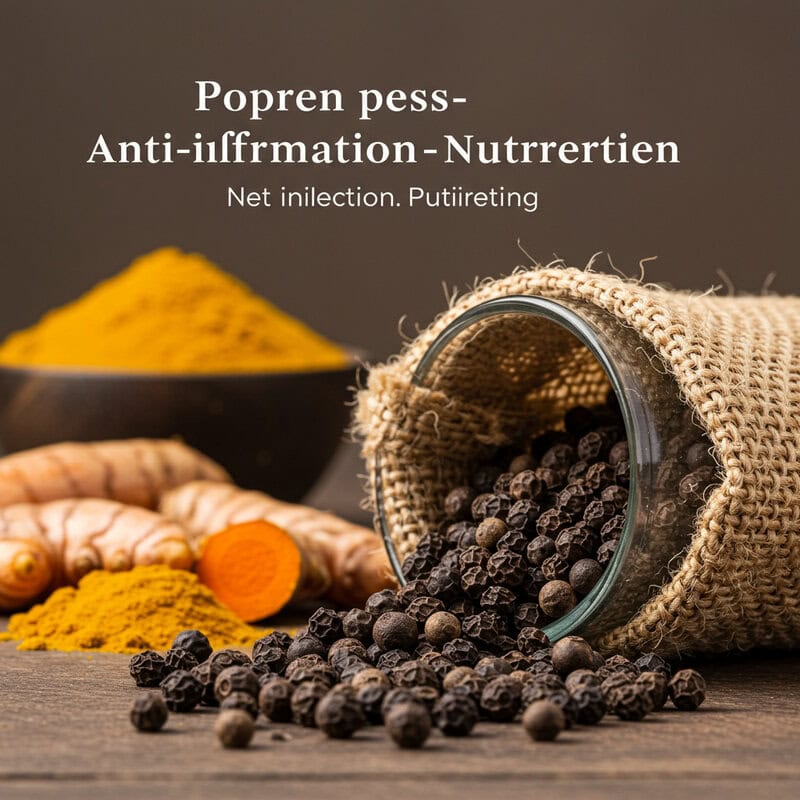
Black pepper is more than just a common spice—it contains piperine, a bioactive compound with notable anti-inflammatory effects. Piperine works by inhibiting the expression of inflammatory mediators such as cytokines and enzymes like COX-2, which are involved in the body’s inflammatory response. Research suggests that piperine can help reduce symptoms of chronic inflammatory conditions and enhance the absorption of other anti-inflammatory nutrients, such as curcumin from turmeric (source).
When compared to chili peppers, which owe their heat to capsaicin, black pepper is milder but still offers significant health benefits. While capsaicin has its own anti-inflammatory and pain-relieving properties, piperine is particularly known for its ability to boost the bioavailability of other nutrients and provide a subtle but effective reduction in inflammation (Healthline).
To maximize the benefits of black pepper, pair freshly ground black pepper with turmeric in curries, soups, and stews. Sprinkle it generously on vegetables, eggs, and salads, or use it to season meats and grains. Adding black pepper at the end of cooking preserves its active compounds for the greatest anti-inflammatory impact.
36. Edamame
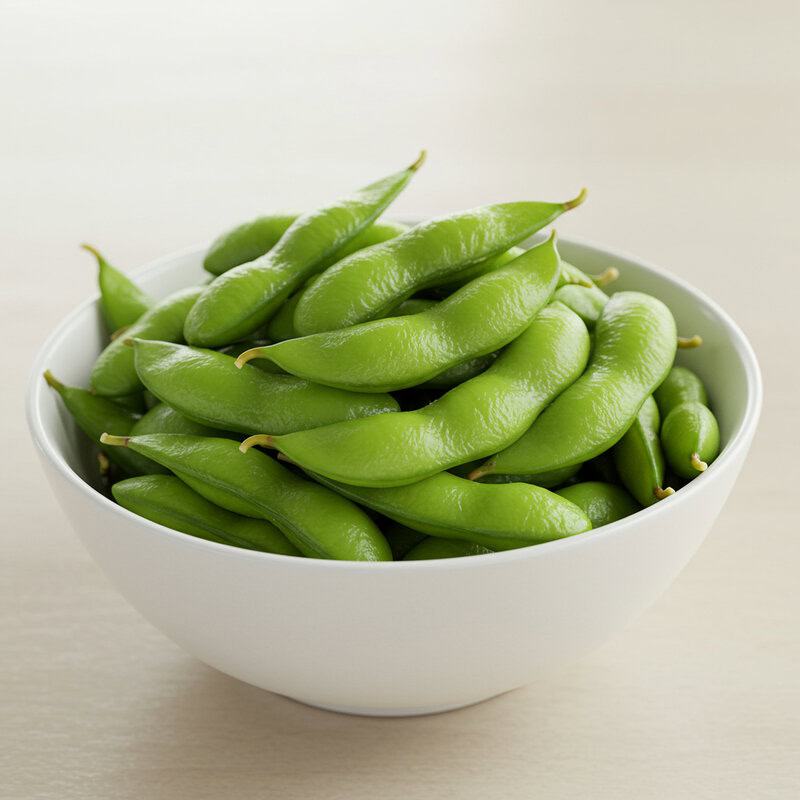
Edamame, or young soybeans, are a nutritional powerhouse known for their rich content of isoflavones, a group of plant compounds with anti-inflammatory and antioxidant properties. Isoflavones, particularly genistein and daidzein, work by modulating inflammatory pathways and reducing the production of pro-inflammatory cytokines. Regular consumption of edamame has been linked to decreased levels of inflammatory markers and improved cardiovascular and metabolic health (source).
When compared to tofu, which is made from coagulated soy milk, edamame offers a whole-food form of soy with slightly higher fiber and vitamin C content. Both edamame and tofu provide similar isoflavone profiles, but edamame’s minimally processed nature allows for more intact nutrients and plant compounds. Tofu, on the other hand, is versatile in both savory and sweet dishes and can be a denser source of soy protein (Healthline).
Edamame can be enjoyed boiled and lightly salted as a snack, tossed into salads, stir-fries, or grain bowls, or blended into dips and spreads. For a quick protein boost, add shelled edamame to soups, pasta dishes, or sushi rolls, taking advantage of its mild flavor and anti-inflammatory benefits.
37. Mango

Mango is celebrated for its rich content of mangiferin, a unique polyphenol with potent anti-inflammatory and antioxidant properties. Mangiferin works by inhibiting the production of inflammatory mediators such as cytokines and enzymes, while also protecting cells from oxidative stress. Studies suggest that mangiferin can help reduce inflammation throughout the body, potentially lowering the risk of chronic diseases like heart disease, diabetes, and certain cancers (source).
When compared to papaya, mango offers a different spectrum of bioactive compounds. While papaya is best known for its enzyme papain and high vitamin C content, mango’s standout polyphenol is mangiferin, complemented by vitamins A and C and other carotenoids. Both fruits provide anti-inflammatory benefits, but mango’s unique phytochemicals make it a valuable addition to a varied diet (Healthline).
Mango is delicious eaten fresh, diced into salads, blended into smoothies, or layered in parfaits. Try adding mango cubes to salsas, pairing with grilled fish or chicken, or freezing for a refreshing sorbet. Its natural sweetness and vibrant flavor make mango an easy and enjoyable way to support anti-inflammatory health.
38. Onions
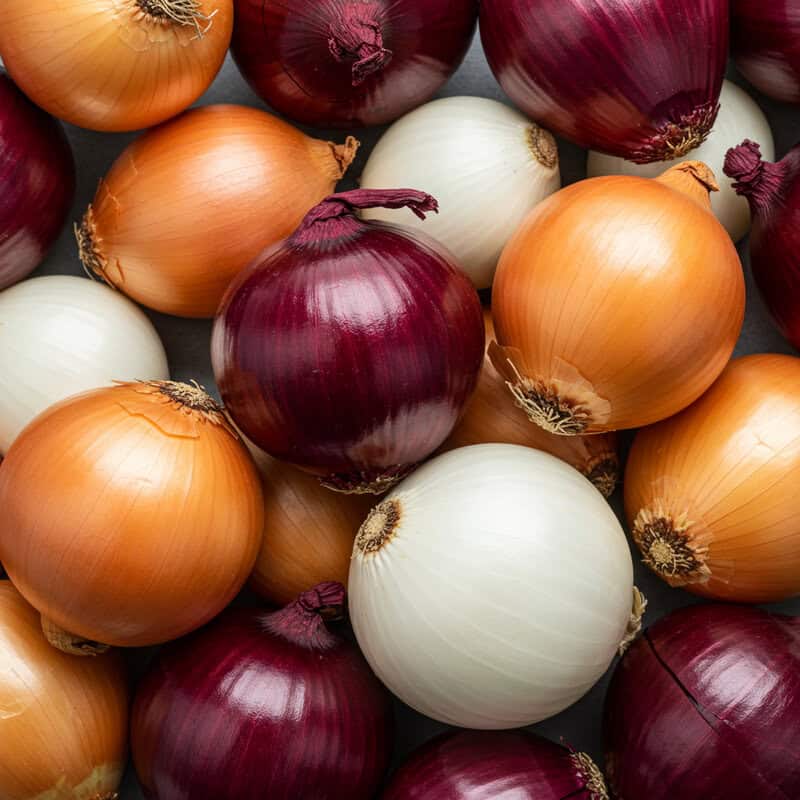
Onions are a staple in many cuisines and offer impressive anti-inflammatory benefits thanks to their rich content of quercetin and sulfur-containing compounds. Quercetin is a powerful flavonoid antioxidant that helps inhibit inflammatory enzymes and suppresses the release of histamines and cytokines involved in the body’s inflammatory response. Sulfur compounds, such as allyl sulfides, further reduce inflammation by supporting detoxification pathways and protecting cells from oxidative stress. Studies have linked regular onion consumption to reduced levels of inflammatory markers and a lower risk of chronic diseases, including heart disease and certain cancers (source).
Red onions tend to have higher concentrations of quercetin and anthocyanins compared to white or yellow onions, making them especially potent in fighting inflammation. While all onion varieties offer health benefits, red onions’ deep color indicates a richer antioxidant profile. White onions have a milder flavor and may be preferred in certain dishes, but for maximum anti-inflammatory impact, red onions are often the top choice (Healthline).
Onions can be enjoyed raw in salads and salsas, caramelized for a sweet and savory topping, or sautéed as a flavor base for soups, stews, and stir-fries. Roasting onions brings out their natural sweetness and enhances their anti-inflammatory properties.
39. Red Cabbage
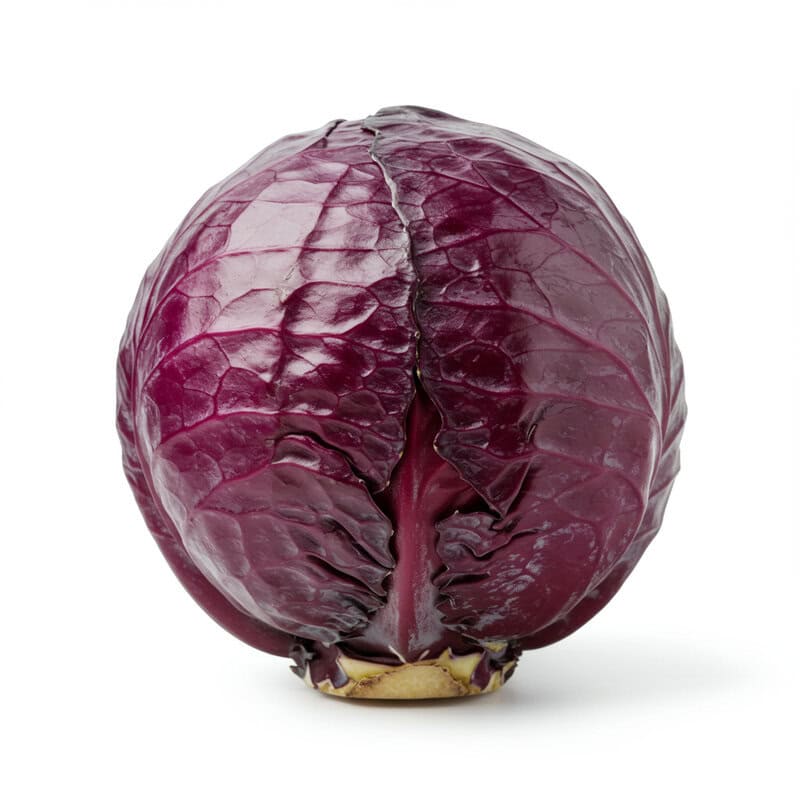
Red cabbage is a cruciferous vegetable prized for its high levels of anthocyanins and vitamin C, both of which exert powerful anti-inflammatory and antioxidant effects. Anthocyanins are the pigments responsible for red cabbage’s vibrant hue, and they help inhibit inflammatory pathways and neutralize free radicals that contribute to chronic inflammation. Vitamin C supports immune function and further reduces oxidative stress throughout the body. Studies have shown that regular consumption of red cabbage can help lower inflammatory markers and may reduce the risk of cardiovascular disease and certain cancers (source).
When compared to green cabbage, red cabbage offers a significantly higher concentration of anthocyanins and vitamin C, making it a superior choice for anti-inflammatory benefits. Green cabbage still provides valuable fiber, vitamins, and glucosinolates, but lacks the rich antioxidant pigment profile of its red counterpart. Both types are beneficial, yet red cabbage delivers an extra boost of protective phytonutrients (Healthline).
Red cabbage can be enjoyed raw in salads and slaws, pickled for a tangy side dish, or sautéed and added to stir-fries. Roasting or braising brings out its natural sweetness, while pairing with apples or nuts adds flavor and texture to your meals.
40. Pears

Pears are a delicious, hydrating fruit that offer impressive anti-inflammatory benefits, primarily due to their high content of flavonoids and dietary fiber. Flavonoids like quercetin and catechin act as powerful antioxidants, helping to reduce oxidative stress and suppress the body’s inflammatory response. The soluble fiber in pears, especially pectin, supports gut health by feeding beneficial bacteria, which contributes to lower systemic inflammation. Studies have associated regular pear consumption with reduced risk of chronic diseases, including cardiovascular disease and type 2 diabetes (source).
When compared to apples, pears offer a similar set of nutrients, including vitamin C, fiber, and a range of polyphenols, though the specific types and concentrations of flavonoids differ slightly. Both fruits are excellent choices for an anti-inflammatory diet, but pears tend to be softer and juicier, making them ideal for those who prefer a milder, less tart flavor. The skin of pears is especially rich in antioxidants, so it’s best to eat them unpeeled (Healthline).
Enjoy pears sliced in salads, paired with cheese and nuts, or baked with cinnamon for a healthy dessert. They blend well into smoothies, oatmeal, and yogurt, or can be poached for an elegant treat.
41. Sunflower Seeds
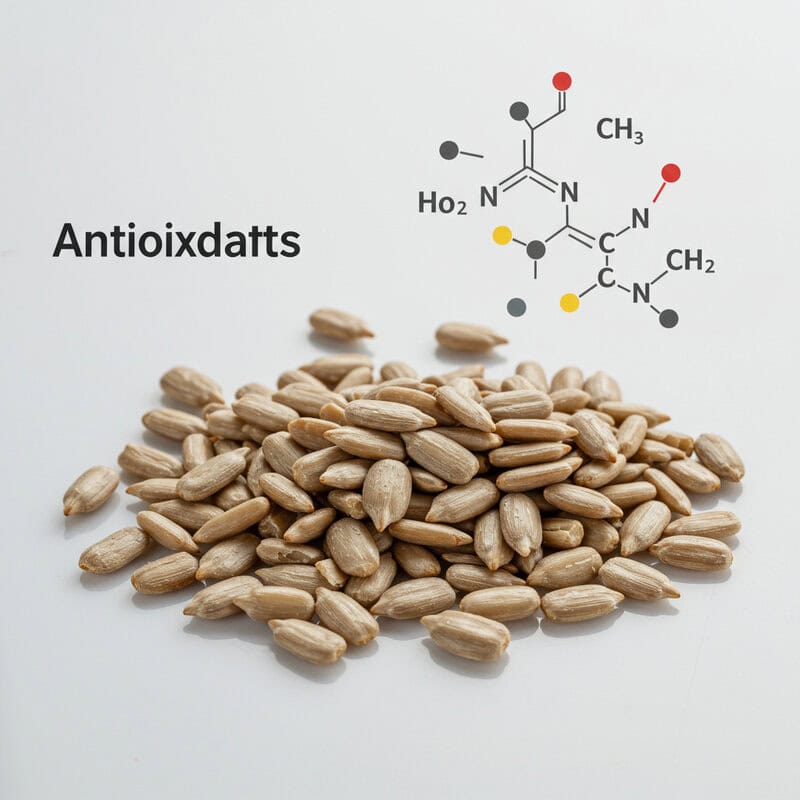
Sunflower seeds are a powerhouse of nutrients, particularly high in vitamin E and selenium, both of which provide significant anti-inflammatory benefits. Vitamin E acts as a potent antioxidant, helping to neutralize free radicals and reduce oxidative stress, which is a key contributor to chronic inflammation. Selenium, an essential trace mineral, also supports the immune system and further aids in lowering inflammation by enhancing antioxidant defense mechanisms. Research has linked the regular consumption of sunflower seeds with improved inflammatory profiles and a reduced risk of cardiovascular disease (source).
Compared to pumpkin seeds, sunflower seeds contain more vitamin E, making them particularly effective for skin health and cellular protection. Pumpkin seeds, on the other hand, are higher in magnesium and zinc, offering additional anti-inflammatory and metabolic benefits. Both seeds are excellent additions to a balanced diet, and alternating between the two can help you reap a diverse array of nutrients (Healthline).
Sunflower seeds make for a crunchy, satisfying snack eaten raw or roasted. Sprinkle them on salads, oatmeal, or yogurt, add to homemade granola, or use as a topping for baked goods. Unsalted and unflavored varieties are best for maximizing health benefits.
42. Kiwi
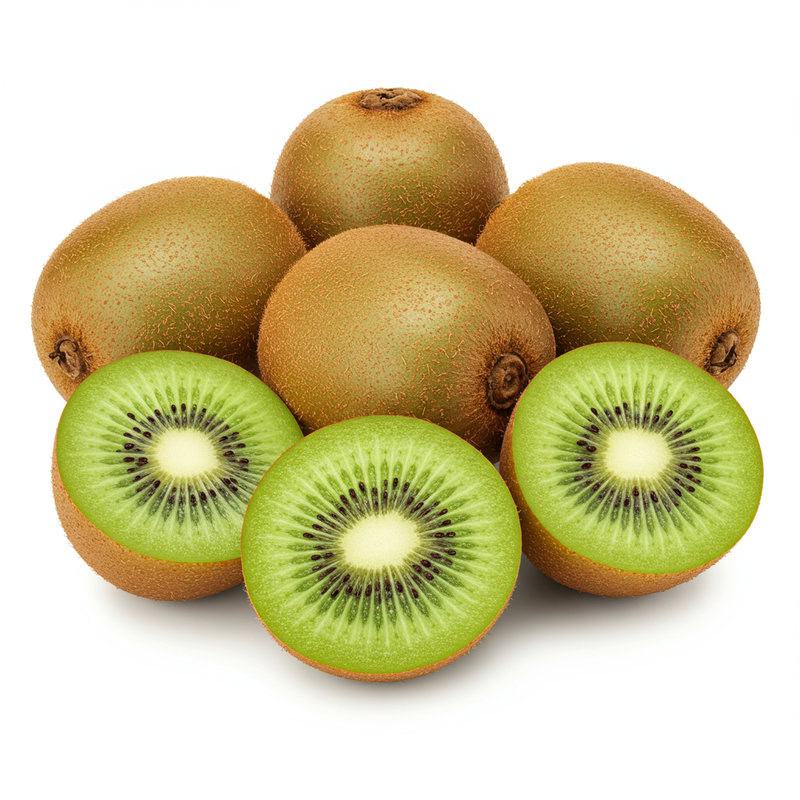
Kiwi is a small fruit that packs a powerful anti-inflammatory punch, largely due to its extremely high vitamin C content and the presence of lutein, a potent carotenoid antioxidant. Vitamin C plays a critical role in neutralizing free radicals and reducing inflammatory markers, supporting both immune and skin health. Lutein, on the other hand, helps protect cells from oxidative damage and has been shown to lower inflammation linked to chronic diseases such as heart disease and age-related macular degeneration (source).
Compared to strawberries, kiwi delivers even more vitamin C per serving, making it one of the most concentrated natural sources available. While both fruits are rich in antioxidants and fiber, kiwi also offers a unique blend of enzymes, such as actinidin, that aid in digestion. Strawberries provide more anthocyanins, while kiwi excels in vitamin C and lutein, so including both in your diet offers complementary anti-inflammatory benefits (Healthline).
Kiwi can be enjoyed sliced on its own, added to fruit salads, blended into smoothies, or layered in parfaits. For a refreshing twist, combine kiwi with citrus or berries, or use it as a topping for yogurt, oatmeal, or whole-grain toast.
43. Brown Rice
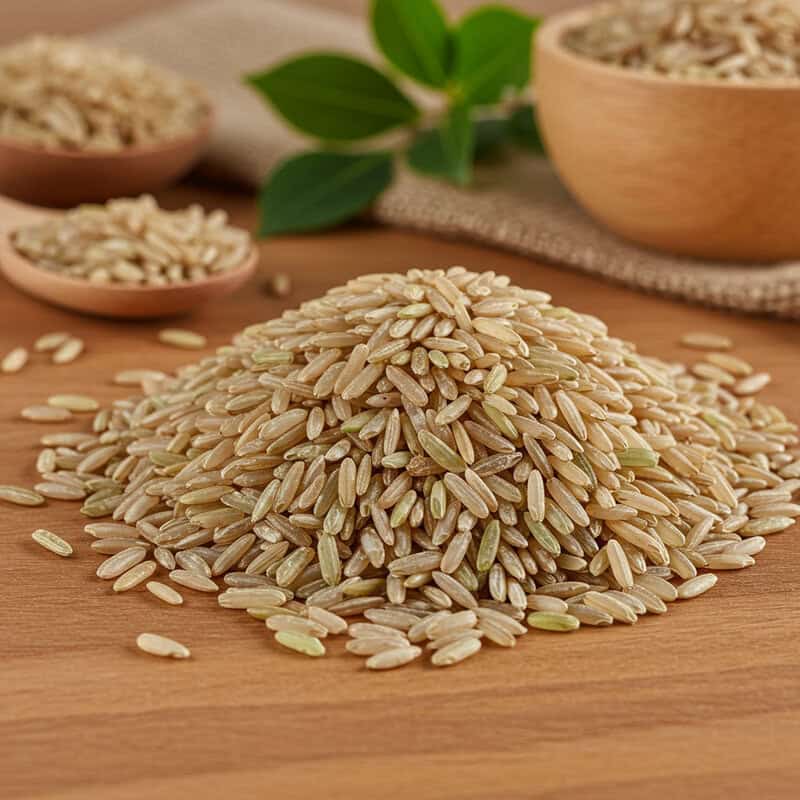
Brown rice is a whole grain celebrated for its impressive content of phenolic compounds and dietary fiber, both of which contribute to its anti-inflammatory effects. Phenolic compounds, such as ferulic acid, act as antioxidants that help neutralize free radicals and inhibit inflammatory pathways in the body. The fiber in brown rice supports gut health by feeding beneficial bacteria, which in turn can lower systemic inflammation and improve immune function. Studies have shown that regular consumption of whole grains like brown rice is associated with lower levels of inflammatory markers and a reduced risk of chronic diseases, including type 2 diabetes and heart disease (source).
When compared to white rice, brown rice retains its bran and germ, where most of the fiber and phytonutrients are concentrated. White rice, having been stripped of these layers, contains fewer antioxidants and has a higher glycemic index, which can contribute to inflammation when consumed frequently. Therefore, brown rice is a superior option for those seeking anti-inflammatory benefits (Healthline).
Serve brown rice as a hearty base for grain bowls, stir-fries, or salads. It pairs well with roasted vegetables, lean proteins, or beans, and can be flavored with herbs, spices, or a drizzle of olive oil for a nutritious, anti-inflammatory meal.
44. Watermelon

Watermelon is a hydrating fruit that delivers notable anti-inflammatory benefits, primarily due to its high levels of lycopene and citrulline. Lycopene is a powerful antioxidant that helps combat oxidative stress and reduce inflammation by inhibiting inflammatory pathways and neutralizing free radicals. Citrulline, an amino acid found abundantly in watermelon, supports healthy blood flow and has been shown to reduce muscle soreness and lower inflammatory markers, especially after exercise (source).
When compared to cantaloupe, watermelon contains significantly more lycopene, which is responsible for its red color and superior antioxidant profile. Cantaloupe, on the other hand, is a great source of beta-carotene and vitamin C but lacks the unique combination of lycopene and citrulline found in watermelon. Both melons are hydrating and nutrient-rich, but watermelon stands out for its specific anti-inflammatory compounds (Healthline).
Enjoy watermelon sliced fresh, cubed in fruit salads, or blended into smoothies for a refreshing treat. For a savory twist, pair watermelon with feta cheese and mint, make a chilled watermelon gazpacho, or freeze cubes for a hydrating snack on hot days.
45. Cauliflower
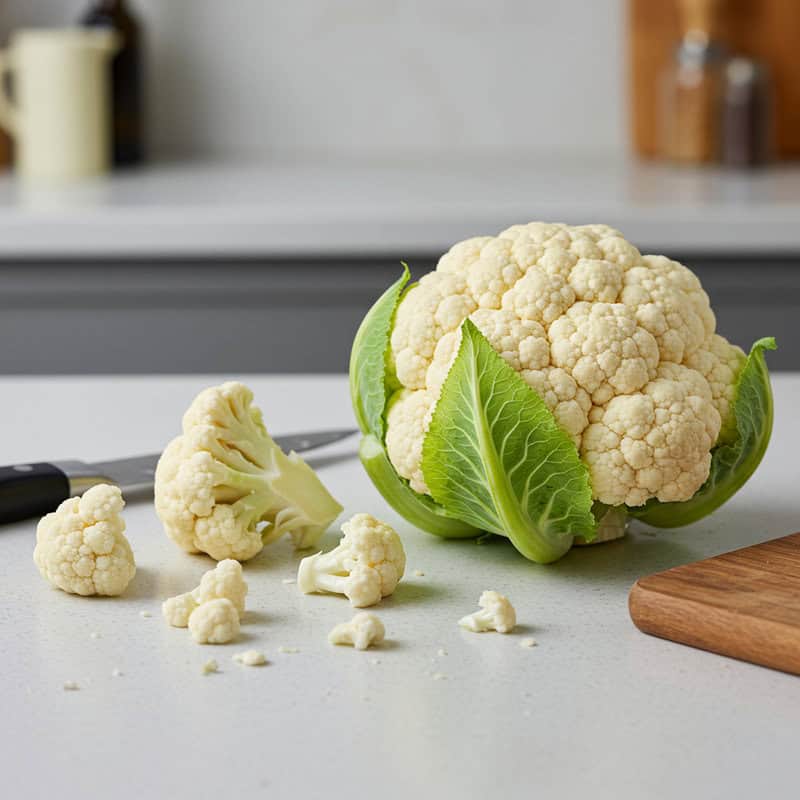
Cauliflower is a versatile cruciferous vegetable rich in glucosinolates and vitamin C, both of which play significant roles in reducing inflammation. Glucosinolates are sulfur-containing compounds that help modulate inflammatory pathways and support the body’s detoxification processes. When cauliflower is chewed or chopped, glucosinolates are converted into biologically active compounds like sulforaphane, which has been shown to suppress pro-inflammatory enzymes and protect against oxidative stress. Vitamin C in cauliflower acts as a potent antioxidant, further lowering inflammatory markers and supporting immune health (source).
Compared to broccoli, cauliflower offers a similar range of glucosinolates and antioxidants, though broccoli is especially celebrated for its higher sulforaphane concentration. Both vegetables are excellent anti-inflammatory choices, with subtle differences in their nutrient profiles and flavors. Including a variety of cruciferous vegetables like cauliflower and broccoli in your diet maximizes your intake of inflammation-fighting compounds (Healthline).
Cauliflower can be enjoyed roasted, steamed, or mashed as a low-carb alternative to potatoes. It’s also delicious riced as a base for grain-free dishes, blended into creamy soups, added to stir-fries, or even grilled as “steaks” for a hearty, plant-based meal.
46. Oily Fish (Mackerel, Herring)

Oily fish such as mackerel and herring are outstanding sources of the omega-3 fatty acids EPA (eicosapentaenoic acid) and DHA (docosahexaenoic acid), both of which are renowned for their anti-inflammatory properties. EPA and DHA help reduce inflammation by inhibiting the production of pro-inflammatory cytokines and eicosanoids, as well as supporting the body’s natural resolution of inflammation. Regular consumption of oily fish is linked to lower levels of inflammatory markers and a reduced risk of chronic diseases, including heart disease, arthritis, and neurodegenerative disorders (source).
When compared to salmon, mackerel and herring offer similar or even higher concentrations of EPA and DHA per serving. All three fish are excellent choices for an anti-inflammatory diet, but mackerel and herring are often less expensive and more sustainable options. They also tend to be lower in mercury due to their shorter lifespans and smaller size (Healthline).
Mackerel and herring can be enjoyed grilled, baked, or smoked. Try adding them to salads, whole-grain toast, or grain bowls, or prepare traditional dishes like pickled herring. For maximum benefits, aim to include oily fish in your meals at least twice a week.
47. Bok Choy
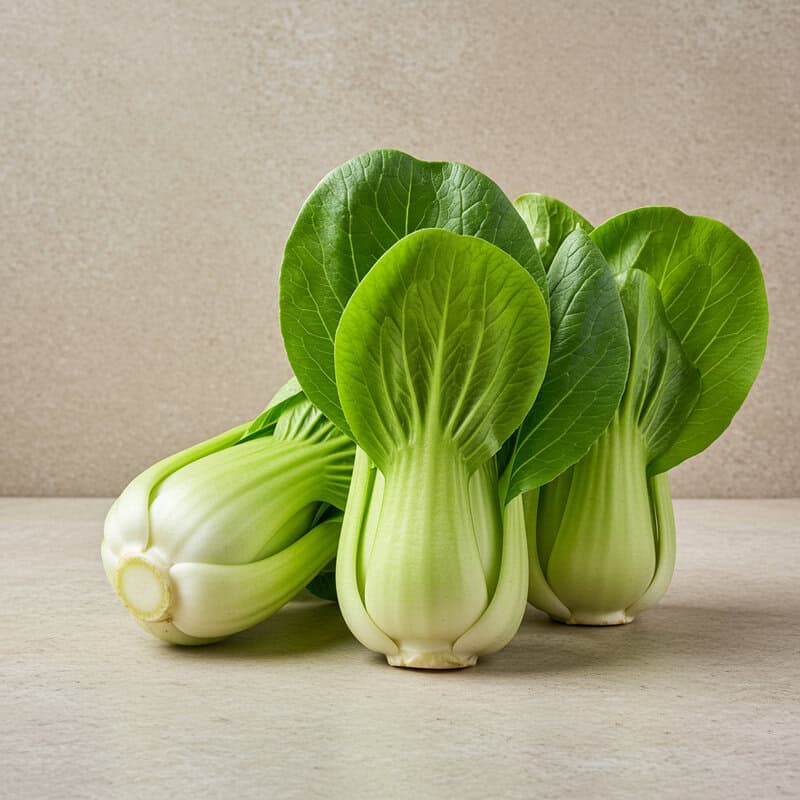
Bok choy, also known as Chinese cabbage, is a cruciferous vegetable rich in vitamins A, C, and K, each of which plays a crucial role in controlling inflammation and supporting overall health. Vitamin A, primarily in the form of beta-carotene, acts as an antioxidant, protecting cells from oxidative stress and modulating the immune response. Vitamin C further combats inflammation by neutralizing free radicals and supporting immune system function, while vitamin K is essential for regulating inflammatory processes and promoting bone health (source).
When compared to napa cabbage, bok choy offers a denser concentration of vitamins A and C, making it particularly valuable for those seeking anti-inflammatory benefits. Napa cabbage, meanwhile, is milder in flavor and texture and provides its own spectrum of nutrients, though in slightly lower concentrations of these specific vitamins. Both vegetables are low in calories, high in fiber, and can be enjoyed as part of a balanced diet (Healthline).
Bok choy is incredibly versatile in the kitchen. Enjoy it stir-fried with garlic and ginger, added to soups and noodle dishes, or lightly steamed as a side. Its tender leaves and crisp stems also make it a great addition to salads or grain bowls.
48. Dark Chocolate (70%+ Cocoa)

Dark chocolate with at least 70% cocoa content is rich in flavonoids and polyphenols, which are powerful antioxidants known to reduce inflammation in the body. Flavonoids, such as epicatechin and catechin, help modulate inflammatory pathways by inhibiting the production of pro-inflammatory cytokines and protecting cells against oxidative stress. Studies suggest that regular consumption of dark chocolate can lower levels of inflammatory markers, improve blood vessel function, and support heart health (source).
When compared to milk chocolate, dark chocolate contains significantly higher amounts of cocoa-derived flavonoids and much less sugar and dairy. Milk chocolate’s higher sugar and fat content, as well as the presence of milk solids, dilute its potential health benefits and may actually promote inflammation when consumed in excess. For maximum anti-inflammatory effects, choosing dark chocolate with a cocoa content of 70% or more is recommended (Healthline).
Enjoy dark chocolate in moderation—about one ounce (28 grams) a few times per week is sufficient for health benefits. Use it as a snack, melt it over fruit, or add shavings to yogurt and oatmeal. Avoid varieties with added sugars or artificial ingredients for the greatest anti-inflammatory impact.
49. Plums
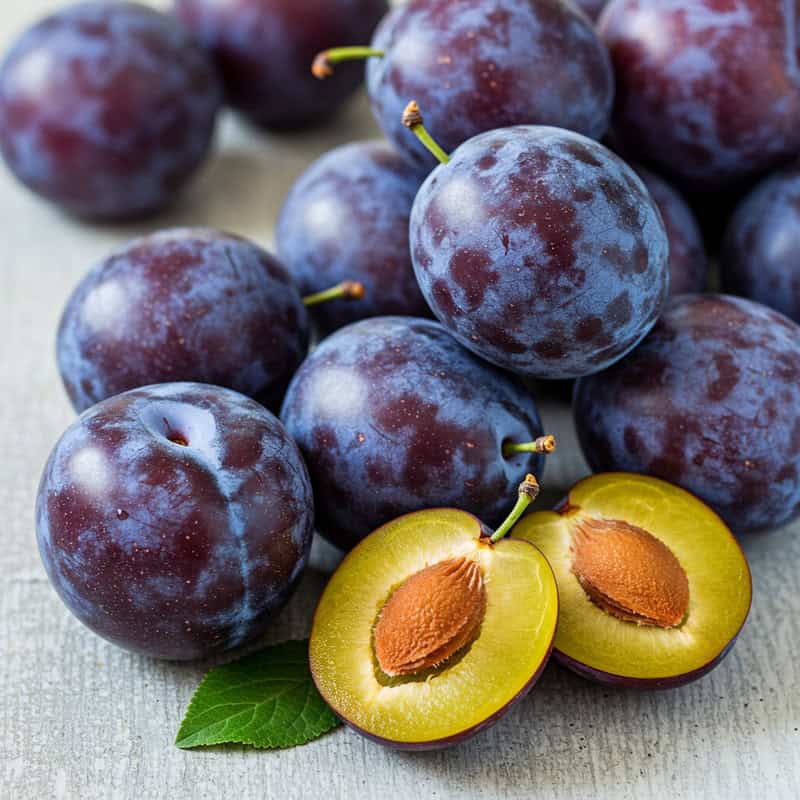
Plums are a delicious stone fruit packed with anthocyanins and vitamin C, both of which offer potent anti-inflammatory and antioxidant effects. Anthocyanins, the pigments responsible for plums’ deep purple or red hues, help inhibit inflammatory pathways and protect cells from oxidative stress. Vitamin C further supports immune function and aids in reducing systemic inflammation. Studies show that regular consumption of plums can lower markers of inflammation and may help protect against chronic diseases like heart disease and certain cancers (source).
When compared to prunes (dried plums), both offer health benefits, but the nutrient profile differs slightly. Prunes are much higher in fiber and certain minerals, making them beneficial for digestive and bone health, while fresh plums provide more vitamin C and hydration but less concentrated sugar and calories. Both forms contain antioxidants, but prunes’ polyphenol content becomes more concentrated through drying (Healthline).
To enjoy more plums, eat them fresh as a snack, slice them into salads, or blend into smoothies. Plums also make a tasty addition to yogurt, oatmeal, or baked goods, and can be roasted or grilled for a naturally sweet dessert.
50. Lentil Sprouts
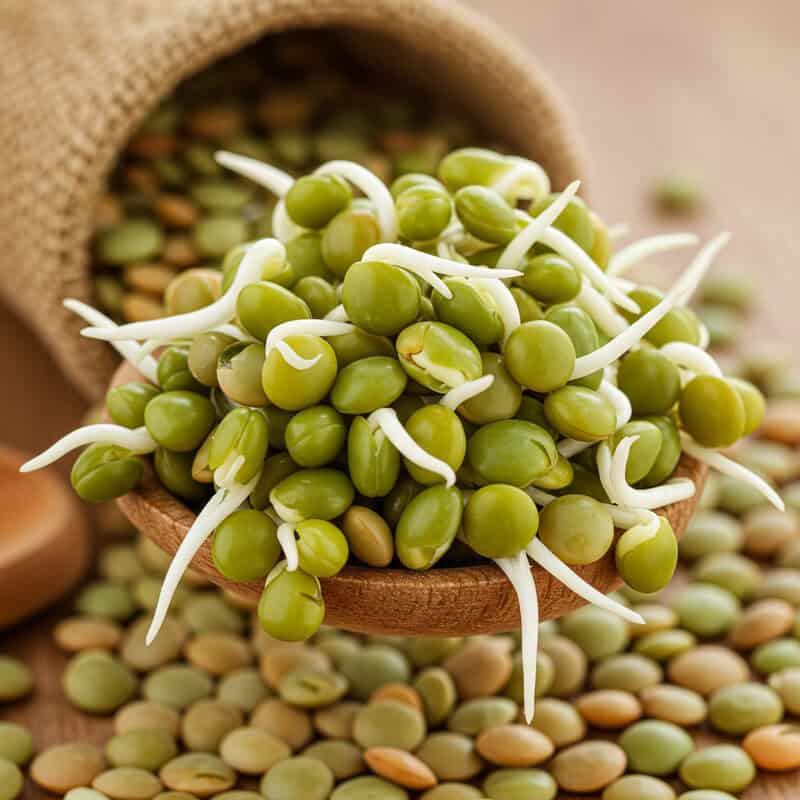
Lentil sprouts are a highly nutritious form of lentils that become even more potent in their anti-inflammatory effects through the process of sprouting. Sprouting increases the bioavailability of vitamins, minerals, and antioxidants, such as polyphenols and flavonoids, which help combat inflammation by reducing oxidative stress and inhibiting inflammatory pathways in the body. Research has shown that lentil sprouts contain significantly higher levels of bioactive compounds compared to their raw, unsprouted counterparts, resulting in improved antioxidant and anti-inflammatory activity (source).
Compared to raw lentils, sprouted lentils are easier to digest and provide more available nutrients, including increased concentrations of vitamin C and certain B vitamins. Raw lentils must be cooked before eating to avoid digestive discomfort and potential antinutrients, while lentil sprouts can be safely consumed raw, making them a convenient and versatile addition to a healthy diet (Healthline).
Incorporate lentil sprouts into your meals by adding them to salads, wraps, or sandwiches for a fresh crunch. They also work well in grain bowls, atop avocado toast, or blended into smoothies. Their mild, nutty flavor complements a wide range of savory and even some sweet dishes.
Conclusion
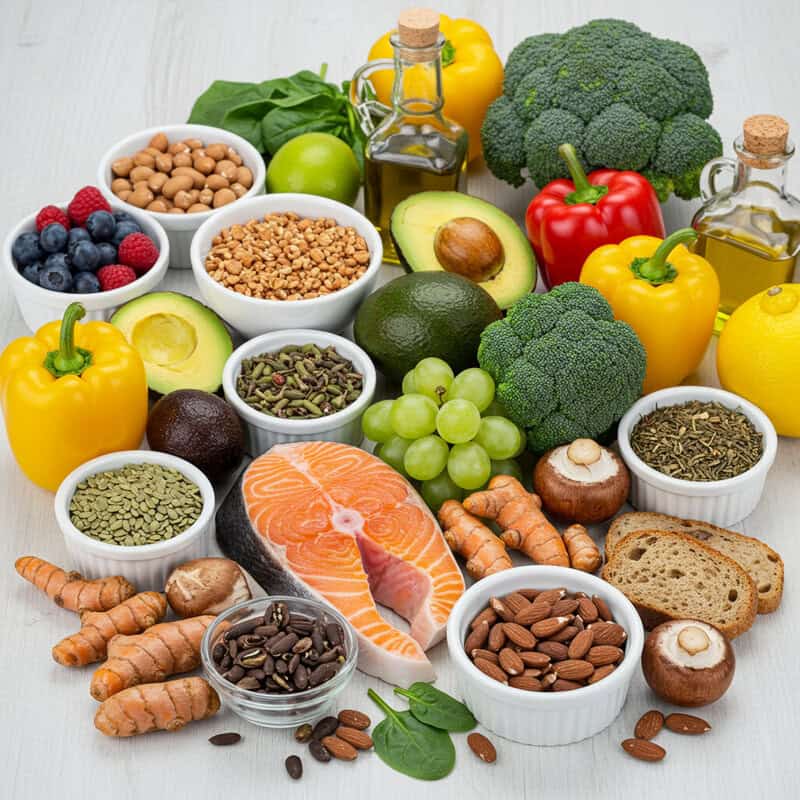
Chronic inflammation is a silent driver of many serious health issues, making it crucial to address this condition proactively. Incorporating a diverse range of anti-inflammatory foods into your daily meals can help reduce inflammation and support long-term well-being. Dietary changes, when combined with other healthy lifestyle habits, can make a meaningful impact on your overall health. If you have concerns about chronic inflammation or related symptoms, consider discussing screening options and personalized next steps with your healthcare provider. Early intervention and guidance can help prevent complications and ensure you’re on the right path to optimal health. Learn more about inflammation and prevention at the CDC Chronic Disease Center.
Disclaimer
The information provided in this article is for general informational purposes only. While we strive to keep the information up-to-date and correct, we make no representations or warranties of any kind, express or implied, about the completeness, accuracy, reliability, suitability, or availability with respect to the article or the information, products, services, or related graphics contained in the article for any purpose. Any reliance you place on such information is therefore strictly at your own risk.
In no event will we be liable for any loss or damage including without limitation, indirect or consequential loss or damage, or any loss or damage whatsoever arising from loss of data or profits arising out of, or in connection with, the use of this article.
Through this article you are able to link to other websites which are not under our control. We have no control over the nature, content, and availability of those sites. The inclusion of any links does not necessarily imply a recommendation or endorse the views expressed within them.
Every effort is made to keep the article up and running smoothly. However, we take no responsibility for, and will not be liable for, the article being temporarily unavailable due to technical issues beyond our control.





